|
The historic San Felice Wine Estate is located in the heart of Chianti Classico in the commune of Castelnuovo Berardenga in Tuscany, Italy. The estate covers an area of more than 650 hectares. There are 150 hectares of wine vineyards, 80% of which is devoted to Sangiovese, the heart of their production. Their presence extends to the prestigious terroirs of Montalcino and Bolgheri as well. San Felice has approximately 17,000 olive trees, experimental plantations, and a hotel complex. Known for its innovation and research to rejuvenate and preserve nearly extinct ancient Tuscan grape varieties, San Felice has launched its new Vitiarium Collection. Vitiarium is a botanical Latin word, when translated to English, means “a nursery for vines - a work in progress." To quote San Felice, “This new line marks the beginning of a fresh chapter in a legacy that continues to evolve, accelerating the trajectory of this true icon of Tuscan wine. This journey now takes on a new identity: Vitiarium, a name that speaks to deep roots—those reaching back to the early 1980s, when ancient native grape varieties, nearly lost to time, were rediscovered and revived. The idea of preserving a forgotten heritage gave rise to an experimental vineyard dedicated to safeguarding Tuscan viticultural biodiversity, from which this new line draws its name. The collection includes Borgo Chianti Classico DOCG, Pugnitello Toscana IGT, In Avane Toscana IGT (a white wine), and La Pieve Chianti Classico DOCG Gran Selezione—each an authentic expression of a land where tradition and innovation meet.” Over the past several years, I have tasted and reviewed a selection of San Felice wines from their three Tuscan estates. They are all noteworthy wines, as are the following four new labels from the Vitiarium Collection. In Avane Chardonnay Toscana IGT 2023 The name “In Avane” comes from “Avenal,” the Etruscan name of the area, which encloses a trace of the ancient culture present in the territory of San Felice. The grapes for this Chardonnay are hand-harvested from the San Felice vineyard and fermented mostly in stainless steel and partly in oak barrels. It is then bottle-aged for a few months. Nose: Beautiful floral and citrus aromas with a slight hint of vanilla. Palate: White peaches, fresh acidity, and a surprisingly long finish with citrus and melon teasing the palate. Alcohol: 12.5% SRP: $33 Pairing suggestions: Enjoy as an aperitif or serve with appetizers, salads, seafood, and grilled chicken. Borgo Chianti Classico DOCG 2022 San Felice said, “Chianti Classico with a character that embodies the soul of San Felice. Sangiovese and Pugnitello come together to create a fragrant and vibrant wine, a faithful and authentic representation of our distinctive terroir.” The blend is primarily Sangiovese with a bit of Pugnitello. Grapes were vinified separately in stainless steel for two weeks and then aged for about 12 months in large Slavonian oak barrels before bottling. Nose: Floral notes, fresh dark fruit, berries, baking spice, and a touch of earth. Palate: Aromas spill onto the palate with cherry and forest floor. Spice and earth linger on the finish. Balanced, smooth and juicy! Alcohol: 13.5% SRP: $33 Pairing suggestions: Grilled meat, seared tuna, mushroom risotto, pizza, or hearty soups and stews. La Pieve Chianti Classico Gran Selezione DOCG 2021 From San Felice, “La Pieve Gran Selezione expresses the essence of San Felice's Chianti Classico. The Sangiovese, harvested from the finest company vineyards and vinified with care, produces a wine that represents the highest expression of the terroir. This is in line with San Felice's production philosophy, which has always sought to interpret the land through native grape varieties.” The predominant grape for this wine is Sangiovese, along with other native grapes. Fermentation occurs in steel tanks for 22 days, then malolactic fermentation and aging in wood for 24 months. It is bottle-aged for eight months before release. Nose: Floral notes of violet, dense red fruit, dark cherry, baking spice, anise, and cherry tobacco. Palate: Well-structured and silky smooth with aromas segueing onto the palate with dark cherry, vanilla, and hints of licorice lingering on a long finish. Alcohol: 14% SRP: $50 Pairing suggestions: Enjoy with a charcuterie board, roasted meats, stews, game, and Pappardelle al Cinghiale. Pugnitello Toscana IGT 2021 From San Felice, “Pugnitello is an ancient Tuscan native grape variety, whose name (little fist) refers to the shape of its cluster. Following its rediscovery, it has been researched in collaboration with the universities of Florence and Pisa in San Felice’s experimental vineyard. This wine is the fruit of 20 years of study and experimentation focused on saving native Tuscan grapes from extinction. Pugnitello is noteworthy for its distinctive characteristics, smoothness, and full-bodied concentration.” This 100% Pugnitello was fermented on the skins for 20 to 25 days, followed by malolactic fermentation, and then aged for 18 to 20 months in French oak barriques, followed by eight months of bottle aging. Nose: Jammy-rich fruit and lots of baking spice, especially cinnamon and clove. Earthy with deeper notes of dark berries and plum.
Palate: Beautifully rich, fruity, and smooth, with a sweet and savory dance. Perfectly balanced and well-structured. Hints of cherry, plum, cocoa, cedar, and smokey notes do a sexy tango on the palate. Run, don’t walk to scoop this one up. Alcohol: 13.5% SRP: $69 Pairing suggestions: Roasted and seared meats, hearty stews, game, fowl, and mushroom risotto. With Memorial Day weekend in full swing, these wines will pair with beach sunsets, BBQs, outdoor and indoor dinners, or relaxing with a good book or movie. And, of course, they are perfect to sip all year long! Until next time, Cheers! Penina To leave a comment or if you have an inquiry, please contact me at [email protected] A few months ago, I had the pleasure of spending virtual time with Serena Gusmeri, winemaker for Vecchie Terre di Montefili, located in the captivating Tuscan hills of Chianti Classico. The estate is in the upper reaches of Panzano and is the first consolidated district for organic wine production in Italy. Ninety percent of Panzano’s vineyards are grown according to the criteria of organic viticulture. In the year 2000, Montefili became part of this organic district. Vecchie Terre di Montefili sits on a hill at 1770 feet with commanding views and vineyards between 1570 and 1770 feet above sea level. In the 1970s, the Acuti family planted vineyards here that eventually became Vecchie Terre di Montefili. The estate was acquired in 2015 by three American investors, Nicola Marzovilla, Frank Bynum, and Tom Peck Jr., whose vision and commitment are to sustainability and biodiversity, while preserving the land’s sanctity. Together with winemaker Serena Gusmeri, they are achieving this goal. The estate has 12.5 hectares of vineyards, of which 11 hectares are dedicated to Sangiovese focusing on low-yielding vines. Galestro, alberese marl, and quartz soils, and Montefili’s micro-climate are exceptional for winemaking.“Each plot is grown and vinified individually to allow its fruit to express its full potential.” Serena Gusmeri has been with Vecchie Terre Di Montefili since 2014. Although a trained winemaker, she said, “ I consider myself more of an agronomist.” Serena grew up at the foot of the Alps. Since childhood, she had a deep connection with nature, cultivating a vegetable garden and tending to chickens. She received her master’s degree in viticulture and then spent time working in Campania and Franciacorta. She said, “These experiences taught me the importance of how unique each vineyard is shaped by the surrounding ecosystem, and our wines express the ecosystem of the vineyards.” Her approach to winemaking “is soft,” with minimal intervention, allowing the grape to dictate what it needs. At Vecchie Terre di Montefili, they collaborate with scientists and botanists from Vite Nova Vine Wellness to undertake a multi-year scientific project to monitor and improve the health of their vineyards. Through regular flora and microfauna sampling, they ensure their activities enhance the ecosystem rather than deplete it. In 2022, they earned the Diversity Ark certification, registered with EUIPO, and were certified by CSQA. This certification emphasizes soil biodiversity and environmental respect, employing a holistic approach to agriculture. Serena guided us through a tasting of five of the estate's wines, all of which are 100% Sangiovese. Chianti Classico 2020 DOCG
This Sangiovese was harvested from the youngest vineyard, which has clay and limestone soil at an altitude of 1640 ft. The wine was barrel-aged a minimum of 15 months and then bottle-aged for a minimum of nine months. Nose: Ripe red fruit with notes of cherry, pomegranate, and baking spice. Palate: Fresh and fruity with dark cherry and fennel. Integrated tannins with baking spice lingering on a medium finish. Serena said, “Due to its high acidity, it must age longer in the barrel.” Alcohol: 14% SRP: $35 Chianti Classico Gran Selezione 2019 DOCG This Sangiovese was harvested from two different vineyards planted in the mid-1980s. The vineyards have Alberese soil and are at 1640 ft altitude. The wine was barrel-aged for 24 months and then bottle-aged for a minimum of 12 months. Nose: Complex aromas of cherry, plum, a hint of forest floor, spice, and herbs. Palate: Fresh and well balanced with silky tannins, earthy notes, plum, sour cherry, baking spice, and a long and juicy finish. Alcohol: 14% SRP: $72 Vigna Vecchia Toscana 2019 IGT The grapes for this Sangiovese were harvested from a 43-year-old vineyard on 0.50 hectares, discovered in 1981. The soil is Alberese, limestone, and marl. The wine was barrel-aged for 26 months and then bottle-aged for a minimum of 12 months. Serena said, “The 2019 year is a nice, elegant vintage.” Nose: Floral, cherry, spice, and a hint of forest floor. Palate: Vibrant with acidity, delicate, and structured, this wine’s aromas segue onto the palate with notes of plum, pepper, herbs, and sour cherry lingering on a savory finish. Yum! Alcohol: 14% SRP: $150 Vigna nel Bosco Toscana 2019 IGT Sangiovese grapes were harvested from a careful selection of the highest vineyard at an altitude of 1750 ft. with Alberese, limestone, and marl soil. The wine was barrel-aged for 26 months and then bottle-aged for a minimum of 12 months. This is a limited edition, which was previewed at Vinitaly 2024. Nose: Floral, ripe-red fruit, cherries, musk, and baking spice. Palate: Rich and complex structure with cherries, plum, pomegranate, and a hint of minerality. A bright and lengthy finish that begs for another sip. Alcohol: 14.5% SRP: $150 Anfiteatro Toscana 2019 IGT This wine is the flagship of the estate. Grapes are sourced from the historic Anfiteatro single vineyard planted in 1975. It is the oldest vineyard at Montefili and “represents the heart and soul of the estate.” The vineyard sits at 1640 ft with Galestro, sandstone, and quartz soil. The wine is barrel-aged for 28 months and then bottle-aged for a minimum of 12 months. Nose: Dried violets, red and black fruit, earthy, baking spice, and a hint of espresso. Palate: A beautiful expression of Sangiovese with smooth tannins, cherry, fig, plum, orange zest. and baking spice that dance on your palate. The finish is long and graceful. Alcohol: 14.5% SRP: $160 These wines pair well with mature cheese, antipasto, roasted meats, game, rich tomato-based pasta dishes, porcini risotto, or grilled vegetables. I used my Coravin on all of the samples and look forward to revisiting them in a few years. Until next time… Cheers! Penina To leave a comment or if you have an inquiry, please contact me at [email protected] It never ceases to amaze me that I can visit countries worldwide and converse in real-time with friends and family or meet with wine producers through the wonders of technology. Not long ago, I traveled to northern Italy via a Zoom meeting with brothers Aldo and Paolo Rametta to learn about the Romagna wine region and their two estates and a tasting of several wines they produce. The slopes of Romagna nestled in the eastern part of the Emilia-Romagna wine region in northern Italy are a treasure trove waiting to be explored. Romagna is a buffered zone between the Apennine mountains and the Adriatic Sea and is known for its rich and fertile terroir. The Emilia-Romagna region, with its proximity to Tuscany, Lombardy, Veneto, and the Adriatic Sea has a rich history of wine production dating back to the seventh century BC and is considered among the older Italian wine regions. It’s capital is Bologna. Aldo and Paolo were born in Louisiana, and although they grew up in the United States and Switzerland, they spent most of their lives abroad. Their passion for the environment, traditional winemaking, and family roots and history led them to Romagna and the purchase of two very distinct wine estates. Their main goal is to produce “a gentle expression of high quality from single vineyards.” Poggio della Dogana is the first wine project begun by the Rametta brothers. They purchased the estate in 2017, located in Terra del Sole. It includes a vineyard that is more than twenty years old which was already in organic conversion at the time. The vineyards cover a total of 20 hectares on a hilly area between Castrocaro Terme and Brisighella, at an altitude between 180m and 300m, with different soil characteristics in each area. The focus of the estate is representative of the Romagna territory, which grows Sangiovese and Albana, a white grape. Aldo said, “Albana is a white wine but quite peculiar for a white variety. We joke that it is red wine dressed in white. Its thick skins release tannins and complexity.” Ronchi di Castelluccio is in Modigliana, in the heart of the Sangiovese di Romagna lands. The Rametta brothers acquired this historic estate in 2020. There are approximately 30 hectares, with vineyards at an altitude between 250 and 500 meters above sea level. Biodiversity and sustainability are practiced in the single vineyards. “The historic vines have been restored, no plant has been torn down and the old growing systems have been introduced.” Except for Sauvignon Blanc, all the crus are 100% Sangiovese grapes. Here are four wines we tasted together (samples I received prior to the meeting.) Ronchi di Castelluccio Sottovento di Castelluccio IGT 2021 Produced from a single vineyard, this 100% Sauvignon Blanc was hand-harvested at an altitude of 390 meters. Soil is marl and calcareous sandstone. Fermentation took place in stainless steel and the wine was aged nine months in wood and a minimum of nine months in bottle. Nose: White flowers, citrus, white stone fruit, saltiness. Palate: Aromas segue onto the palate with fresh and lively notes, and sapidity lingering on the finish. Alcohol: 13% SRP: $40 Poggio della Dogana Belladama Romagna DOCG Albana Secco 2022 This 100% organic Albana was hand-harvested from 20-year-old vineyards at 200m and 300m altitude. Fermentation took place in stainless steel vats, and was aged for ten months in concrete and a minimum of four months in bottle. The typical signature of this wine is its intense golden color, which becomes more intense as it ages. Nose: White flowers, citrus, peach, apricot, and herbs. Palate: Lively acidity, fresh, dry, good structure, and a touch of minerality. A trace of tropical fruit and citrus zest linger on the finish. Alcohol: 13.5% SRP: $30 Ronchi di Castelluccio Buco del Prete di Castellucio DOC Sangiovese Modigliana 2021 From the 300m alt. single vineyard of the same name, Buco del Prete, this 100% Sangiovese was hand-harvested and fermented in steel. Aging took place in large French oak barrels for 12 months and at least six months in bottle. This vineyard is the lowest altitude vineyard on the estate at Modigliana. Nose: Dark fruit, forest floor, baking spice, and a hint of lavender. Palate: Rich dark fruit, dark berries, black cherry, fennel, lively acidity, smooth tannins, and a touch of spice on a long finish. Alcohol: 13% SRP: $40 Ronchi di Castelluccio Ronco della Simia DOC Sangiovese Modigliana 2020 The grapes for this 100% Sangiovese were sourced from Modigliana, in a vineyard restored in 2019 that was originally planted in 1975. It is a single vineyard with the highest elevation for a Sangiovese vineyard. (370 meters alt) Fermentation took place in steel and small oak vats and then was aged for ten months in Allier, Vosges, low-toasted tonneaux, and barriques. It then remained in bottle for a minimum of 14 months. Nose: Violets, red fruit, earthy, and baking spice. Palate: Beautiful texture and mouthfeel. Sapidity is present. Juicy, meaty fruit, dark cherry, smooth tannins, sweet spice, and a long finish. Alcohol: 13.5 % SRP: $140 In addition to my palate being entertained, the Rametta brothers had lots of information and stories to share. Their passion, love, and respect for the environment and history were palpable. They have piqued my interest in visiting Romagna and immersing myself in the land, culture, and wine! “There is no future without respect for history: we will be brave and let ourselves be driven by dreams and emotions.” Aldo & Paolo Rametta Until next time…
Cheers! Penina To leave a comment or if you have an inquiry, please contact me at [email protected] Labor Day has come and gone, and we have flipped the calendar page to September. However, summer isn’t officially over until September 22nd. We still have more beach days, picnics, grilling, outdoor concerts, and summer sunsets to enjoy! With that in mind, here are four wines that will take you through the end of summer, into the fall, and even winter! Moser 51.151 Trentodoc Brut Sparkling Wine NV Moser Winery, located in Trentino, Italy, was established in 1979 by Diego and Francesco Moser. Today, the winery is run by third-generation Carlo and Matteo, who combine family traditions with innovative and modern winemaking techniques. Moser winery sits among the Dolomites in the Trentodoc appellation, with vineyards benefiting from micro-climates and diurnal variations. This sparkling wine is produced in the Metodo Classico method, with 100% Chardonnay grapes grown on limestone soils in the Trento DOC Bianco appellation. Secondary fermentation and aging occur in bottle for 15 months on the lees. Nose: Floral, apples, citrus zest, white stone fruit, and baked croissant. Palate: A crisp and lively wine with fine perlage and notes of minerality, sapidity, and a touch of lemon zest on the finish. Alcohol: 12.5% SRP: $23 Pairing suggestions: Enjoy as an aperitif or with light appetizers, seafood, mushroom risotto, and dessert. Bolla Pinot Grigio Delle Venezie DOC 2023 Bolla Winery was founded in 1883 by Alberto Bolla in Soave. In 1931, he opened a winery in Pedemonte, a town in the province of Vicenza, Veneto, Italy. And in 2006, Gruppo Italiano Vini purchased the company. In 2016, Pinot Grigio attained DOC status in the geographical area of Veneto, Friuli-Venezia Giulia, and Trentino for the production of Pinot Grigio Delle Venezie DOC. The DOC Delle Venezie covers almost 28 thousand hectares of vineyards, encompassing the entire northeast area of Italy! The grapes for this 100% Pinot Grigio are sourced from hillside vineyards in Delle Venezie. Nose: White stone fruit, citrus, green apple, and melon. Palate: Light with crisp acidity, minerality, and hints of melon and peach lingering on the finish. Alcohol: 12% SRP: $11.99 Pairing suggestions: Enjoy as an aperitif or with seafood (especially oily fish) or shellfish. Also, white meat, light pasta, salads, and vegetable risotto pair nicely. Avivo Rosé Wine 2023 Avivo Wines is led by Ridgely Evers, Founder & CEO, and Daniel Fitzgerald, Director of Winemaking and owner. Their mission and goal is to make “clean wines.” They are committed to transparency and regenerative agriculture that reaches beyond sustainability in the vineyard and winery. In addition, AVIVO packages its wines in lightweight glass and uses Nomacorc Ocean corks made from recycled marine plastic waste. The blend for this rosé is 95% Sangiovese and 5% Syrah. The grapes are sourced from Ledbetter Family Vineyards in Lodi, CA. Fermentation took place in neutral oak and was aged in neutral French oak barrels for five months. Nose: Floral notes, red berries, vanilla, and a dash of citrus. Palate: Expressive! Dry, racy acidity, raspberry, melon, and a touch of cherry and pepper on the finish. Oh my! Alcohol: 12.8% SRP: $24 Pairing suggestions: Enjoy as an aperitif or with appetizers, seafood, crab quiche, light pasta, or grilled chicken. San Pedro 1865 Selected Vineyards Carmenère 2019 Viña San Pedro is situated in Maule Valley, Chile. It was founded in 1865, hence the name of the wine. Today, it is one of the largest and oldest exporters of Chilean wine. The grapes for this 100% Carmenère were sourced from San Pedro’s vineyards in Pencahue in the Maule Valley, and production took place at their Molina Winery in the Curicó Valley, 200 km south of Santiago. After fermentation, the wine was aged 12 months in French oak barrels (90%) and American oak (10%). 20% of the barrels were new. Nose: Intoxicating notes of dark fruit, cherry, baking spice, herbs, and pepper. Palate: Smooth tannins, rich and savory, with juicy blackberry and cherry leading the parade, followed by a hint of plum and a grand finale of cherry fusing with subtle herbs and pepper on a long finish. Alcohol: 14.5 % SRP: $20 Pairing suggestions: Get the grill going and enjoy this wine with seared tuna, steak, and fowl. Or serve with hearty stews, pasta, charcuterie, or cheese boards. Cheers to embracing the last few weeks of summer and looking forward to a stellar autumn! Until next time…
Cheers! Penina To leave a comment or if you have an inquiry, please contact me at [email protected] To usher in autumn, I thought it would be fun to travel to Tuscany. And the best part is that you don’t have to pack a bag or wait in long lines at the airport. A glass of Tuscan wine and an authentic Tuscan soup recipe is all you need for your travels. Let your palate take you on a delectable sensory adventure! The Wine I have selected two Tuscan wines for the journey; both pair well with the featured soup that follows. Dogajolo Toscano Rosso IGT 2020 Carpineto, a Tuscan winery founded in 1967, produces Carpineto and Dogajolo wines. This year marks a 30-year milestone for the production of Dogajolo Super Tuscans, specifically Toscano Rosso, launched in 1993. In 2009, Toscano Bianco was added to the Dogajolo line, followed by Toscano Rosato in 2011. They have 1,200 acres of sustainably farmed land spread amongst five carbon-neutral estates in the appellations of Brunello di Montalcino, Chianti Classico, Vino Nobile di Montepulciano, Maremma, and Alto Valdarno. This wine is 80% Sangiovese and 20% Cabernet Sauvignon sourced from Tuscan hillside vineyards. It is aged six months in previously used French and American oak barrels and cement vats, followed by four to six months in bottle. Nose: Fragrant red fruit, cherry, and baking spice. Palate: Juicy red berries spill onto the palate with cherry, plum, a hint of balsamic, and coffee beans. Smooth and delicious! Alcohol: 13% SRP: $14.99 Talosa “Alboreto” Nobile di Montepulciano DOCG 2019 Fattoria Della Talosa is a boutique winery with 33 hectares of vineyards in the heart of Montepulciano in Tuscany and has been owned by the Jacorossi family since 1972. Their historic aging cellar dates back to the 16th century. It is in the old town center of Montepulciano, in an underground area between two of the oldest buildings in the city, Palazzo Tarugi and Palazzo Sinatti. The brick passageways contain a series of vaults and niches where the barrels are placed. In 1980, Vino Nobile became one of the first four appellations given the superior status of DOCG, along with Barolo, Brunello di Montalcino, and Barbaresco. The grapes for this 100% Sangiovese are sourced from the Vino Noble di Montepulciano DOCG appellation. The wine is aged for two years in barrels of 2nd, 3rd, and 4th passage and stainless steel and then continues to age in bottle. Nose: Floral, berries, cherry liquor, baking spice, and a hint of sweet tobacco. Palate: Aromas segue onto the palate with dark cherry and spice. Tannins and acidity are beautifully balanced, with cherry, cocoa, and vanilla lingering on a long finish. Alcohol: 14.5% SRP: $25 The Soup Ribollita - An Italian Fall Vegetable Soup featuring stale bread. I would love to take credit for this Tuscan soup, but the honor goes to Iolanda Marcocci, a beautiful ninety-year-young nonna. Coleen Kiman, host and owner of Tuscan Women Cook, says, “Our first bowl of this hearty soup was prepared by Iolanda, who served it al fresco on the terrace outside her kitchen on a long, weathered table overlooking a sweeping Tuscan sunset. It is a rich sense memory we’ll always cherish.” This hearty soup is a favorite of the nonnas of the Tuscan village of Montefollonico and the participants of Tuscan Women Cook. Ribollita dates back to the Middle Ages when peasants foraged for whatever food they could find to make a thick soup, which included stale bread that, when toasted and added to the broth, maintained its shape and absorbed all the flavors. Ribollita means “re-boiled” in Italian. When “reheated” the next day, it is even better! Coleen says, “When the bread has an extra day or two to absorb even more of the flavorful broth, Ribollita will thicken and taste creamy. Feel free to add your own favorite vegetables and herbs to this recipe. There are no hard and fast rules for Ribollita, except to reheat and enjoy, day after day!” Serves 8
Ingredients
Instructions Rinse the beans in a colander and pick out any debris or small stones. Place in a medium stockpot and add cold water to cover the beans by about 2 inches. Cover and soak overnight. Drain the beans and cover them with fresh water. Add the Parmesan cheese rind. Over medium heat, simmer until the beans are tender, about 30 minutes. Set aside. Heat the olive oil in a large Dutch oven over medium heat. Add the diced onion, carrots, and celery (soffritto). Cook, stirring occasionally, until the onions are translucent, for about 10 minutes. Stir in the tomatoes, the beans, and their cooking liquid. Season with salt, pepper, and oregano. Add the chard and cabbage. Add additional water, chicken, or vegetable stock as needed to completely cover the chard and cabbage. Bring the mixture to a boil. Reduce the heat and simmer for 1 hour. Adjust the seasonings to taste. Place a piece of bread in each bowl. Ladle the soup on top of the bread. Top each serving of the soup with some Parmesan cheese, a dash of olive oil, and freshly ground black pepper. Recipe and photo reprinted with permission of www.TuscanWomenCook.com from the Tuscan Women Cook Cookbook. Tuscan Women Cook: Nonnas. Memories. Recipes cookbook is a wealth of generational recipes put together by Coleen Kiman with Rhonda Vilardo. The nonnas of the village of Montefollonico and neighboring towns shared the recipes. The book has over 50 delectable recipes, photos, stories, and many tips. Enjoy the wine and soup, and happy travels! Until next time… Cheers! Penina To leave a comment or if you have an inquiry, please contact me at [email protected] Occasionally, I take stock of my “wine cellar” and open a bottle or two that has been collecting dust. While perusing the various labels this morning, I stumbled upon a box of three wines hidden so well I had genuinely forgotten about it. It was an exciting find, which inspired me to open one of the bottles and pair it with the evening’s dinner. The wines were a gift from Giovanna Neri, owner of Col Di Lamo in Tuscany, specifically Montalcino! Montalcino is located amongst the rolling hills of Tuscany, home to one of Italy’s most renowned wines, Brunello Di Montalcino. Montalcino is a small wine region comprised of 60,000 acres of olive groves, forests, and farmland, of which 3,500 acres are devoted to wine vineyards. Made exclusively from the Sangiovese grape, (named ‘Brunello’ in Montalcino), Brunello Di Montalcino was awarded the first-ever DOCG designation (Denomination of Controlled and Guaranteed Origin) in 1980, the highest designation given under Italian wine law. Brunello di Montalcino is one of Italy’s most famous and distinguished wines. The skin of the Sangiovese grape is thick and tends to deliver fruit-forward wine with bright acidity and high tannins. The climate in Montalcino is warm and dry, typical Mediterranean weather. Vineyards are planted up to 500 meters in elevation, with north-facing slopes experiencing a cooler microclimate and more winds. In contrast, the southern and western-facing slopes are exposed to extreme sunlight and maritime breezes. The vines are planted in various soils such as limestone, clay, schist, volcanic soil, and galestro, which is schistous clay soil commonly found in most of Tuscany’s best vineyards. All these elements can contribute to the difference in quality, complexity, and character of the wine. Regulations require that Brunello di Montalcino age for a minimum of two years in oak wooden barrels and at least four months in bottle before release. The Riserva wine must age at least six months in bottle and is released a year later onto the market. And the wine can only be bottled in the location where it is produced. These wines have an aging potential of 30 years if stored properly and acquire more complexity the longer it ages. Col Di Lamo Col Di Lamo is an exclusive, all-female organic winery owned by winemaker Giovanna Neri and her daughter, Diletta. The winery was founded in 1994 after her daughter was born. The estate covers an area of approximately 80 hectares. Giovanna inherited her passion for wine and winemaking skills from her father, who passed away in 1991. Giovanna considers her wines “her creations” (children) and continually spreads her love and respect for the land and her products. It is a small production winery of quality and refinement. Here is an excerpt from my interview with Giovanna a few years ago. What inspired and motivated you to make this an all-female winery? Giovanna: For me, it was a natural process. My company is my creation, which I wanted for myself and for which I fought a lot in a world that was still very male-chauvinist, especially the wine industry. Compared to others, I had to prove triple to make it clear that a woman, completely alone and starting from scratch, could create wines of the highest quality. When I tell my story, I always say that I consider my company another daughter of mine. I gave it a name; I dedicated all the commitment, love, and dedication I have to it, as with my daughter Diletta. Where did you do your training to become a winemaker? Giovanna: I graduated with honors in law and embarked on a career as a lawyer. I felt, however, that this work, although gratifying, was not my way. So, at the age of 40, I decided to drastically change my life and have a part of the family business (it’s not so obvious if you are a woman). So, without any particular skills and the help of anyone, I threw myself body and soul into this fantastic adventure. There have been challenging times. The beginnings were really hard; I only had men around me, and no one believed I could do it. Luckily, they are the same men who now hold me in esteem. What is Diletta’s role in the company? Giovanna: Diletta helps me in communication. I believe a young vision is essential in a world that runs more and more on the Internet, especially social networks. Tell me about some of your challenges with winemaking and the industry. Giovanna: I strongly believe in wine and organic products in general. I was among the first to choose this type of cultivation in Montalcino, not without criticism. But I am convinced that it is the future. I feel like a guest in this land, and I have chosen to do this job precisely because I love the planet and want to respect and enhance it as much as possible, even for future generations. Although all three wines are highly rated, I chose to open the Brunello di Montalcino DOCG 2016 This wine is hand-harvested and fermented with native yeasts. It is aged 24 months in oak barrels and six months in steel tanks. Nose: Berries, floral, cherry, earth, tobacco, herbs, fig and baking spice. Palate: Rich, savory, and balanced with blackberry, dark plum, cloves, cinnamon, nice acidity, and a long finish of savory and sweet dark berries. Simply elegant! Alcohol: 14% SRP: $68 Pairing suggestions: Aged cheese, roasted meat and game, hearty soups, stews, mushroom risotto, and seared tuna. I paired this wine with a thick, hearty, nutritious Lentil Tomato Soup filled with carrots, celery, onion, and an assortment of herbs. If you would like the recipe for the soup, please email me. Contact information is below. Until next time,
Cheers! Penina To leave a comment or if you have an inquiry, please contact me at [email protected] It’s hard to believe that summer is almost over, and autumn is just around the corner. I’m looking forward to cooler weather, embracing fall foliage, and changing the menu to include hearty soups and stews. And I love pouring a decadent red wine to pair with autumn! So, let’s explore a few Tuscan wines from the San Felice Estate. The historic estate of San Felice is situated in Chianti Classico in the commune of Castelnuovo Berardenga, with vineyards throughout Tuscany’s three most prestigious wine-making areas. They have 150 hectares in Chianti Classico, 23 hectares in the municipality of Montalcino, and 15 hectares in Bolgheri. 80% of their vineyards are devoted to Sangiovese, which is at the heart of their production. Here is a selection of three eclectic wines from their Chianti Classico Estate. Pugnitello Toscana IGT 2020 Pugnitello is an ancient and indigenous Tuscan grape variety. Its name in Italian is “little fist,” which refers to the shape of its cluster. San Felice has collaborated with the universities of Florence and Pisa in their experimental vineyards for the past 20 years, focusing on saving this grape from extinction. This wine is 100% Pugnitello. It is aged 18-20 months in French oak barriques and another eight months in the bottle. Nose: Dark fruit, perfume, baking spice, and toasted oak. Palate: Aromas segue onto the palate with blackberry, plum, and vanilla. It is rich and smooth. Alcohol: 13.5% SRP: $57.99 Pairing suggestions: Hearty red-sauce pasta, roasted fowl, lamb, stews, mushroom risotto, and aged cheese. Vigorello Toscana IGT 2019 This wine was first produced in 1968 and became part of what is known as the Super Tuscans. This term is applied to a style of high-quality Tuscan red wines that might include a blend of indigenous and non-indigenous grapes. This wine is a blend of 35% Pugnitello, 30% Merlot, 30% Cabernet Sauvignon, and 5% Petit Verdot. It is aged in French oak barriques for 24 months and then eight months in the bottle. Nose: Red jam, forest floor, baking spice, and roasted coffee beans. Palate: Rich and beautifully structured with dark cherry, dark berry, earthy, hint of herbs, and vanilla lingering on a long finish. Alcohol: 13.5% SRP: $57.99 Pairing suggestions: Aged cheese, grilled or roasted meat, game, vegetable stew, Porcini risotto, or seared tuna. Poggio Rosso Chianti Classico Gran Selezione DOCG 2017 To quote San Felice, “Poggio Rosso is the fruit of a rigorous selection of Sangiovese grape variety from selected parcels of the same single vineyard, and today it represents the pinnacle of San Felice’s terroir. A wine of immense depth and superb elegance, produced in limited quantity and exclusively in outstanding vintages.” This wine is 100% Sangiovese and aged 20 months in French oak barrels and then 15 months in the bottle. Nose: Intoxicating floral notes, red cherry, berries, plum, and baking spice. Palate: Earthy, with smooth tannins, plum, red berries, a trace of herbs, and a hint of fennel. Vanilla and dark chocolate linger on a long and delicious spicy finish. Alcohol: 13.5% SRP: $65.99 Pairing suggestions: Aged cheese, roasted or grilled meat, game, stews, or hearty pasta dishes. Wine from the Bolgheri Estate Bell’Aja Bolgheri DOC Superiore 2020 The Bolgheri DOC runs parallel to the Tuscan coast, bordering the Ligurian Sea. Bell’Aja Vineyard is located in a natural amphitheater overlooking the sea and benefits from abundant sunshine and cooling sea breezes. Grapes for this wine are sourced from Le Sondraie, the oldest Merlot parcel of this vineyard. The wine is 95% Merlot and 5% Cabernet Sauvignon. It is aged 18 months in French oak barrels. Nose: Jammy fruit, cherry, licorice, cocoa, roasted coffee beans, and spice. Palate: Juicy dark berries, plum, spice, toast, and silky tannins balanced with acidity. A beautiful wine with a long and satisfying finish. Alcohol: 15.5% SRP: $68.99 Pairing suggestions: Pasta, roasted game, glazed duck, aged cheese, and stew. Wine from the Campogiovanni Estate Campogiovanni Brunello di Montalcino DOCG 2018 The grapes for this 100% Sangiovese wine are sourced from the Campogiovanni vineyards situated on the south quadrant of the Montalcino hill and considered an excellent area for the production of Brunello. San Felice has 23 hectares here, of which 14 hectares are Brunello vineyards. This wine is aged 36 months in French oak barrels and Slavonian oak, followed by twelve months in the bottle. It is one of the San Felice Estate’s flagship wines. Nose: Ripe red berries, dark jam, earthy, balsamic notes, baking spice, and a hint of leather.
Palate: Aromas segue onto the palate with plum, pepper, and a touch of herbs. It is beautifully structured and rich, with a long and elegant finish that begs for another sip. Alcohol: 14% SRP: $66 Pairing suggestions: Wild game, grilled meat and fowl, aged cheese, pasta, vegetable stew, and truffle risotto. All of these wines have aging potential and will surely please the palate! If you missed my “It’s Wine & Dine Time!” article featuring a San Felice wine and a recipe prepared by Borgo San Felice Executive Chef Juan Quintero, click on this link. http://thewineknitter.com/the-journal/its-wine-dine-time Until next time… Cheers! Penina To leave a comment or if you have an inquiry, please contact me at [email protected] The month of April is ending with her classic “April showers” all weekend long. And we all know what May brings! I’m looking forward to May flowers, warmer weather, spending more time outdoors, and taking the kitchen outside for the grilling season. Just because the warmer months are almost upon us does not mean one has to pack away the red wines along with mittens and boots. On the contrary, red wines are to be enjoyed year-round and are a great accompaniment to many summer dishes. So to kick off the season, I’ve rounded up a selection of six red wines that will pair beautifully with whatever you might have on the grill. The wines range from $13.99 to $25.00 and will not disappoint your palate. Bodegas Valdemar Conde Valdemar Crianza 2018 Bodegas Valdemar Winery is located in Oyon, Alava Spain, and has a history of winemaking dating back to 1889. They have 300 hectares of vineyards throughout Rioja and are considered one of the largest estates in Rioja. Grapes for this wine are a blend of 89% Tempranillo, 7% Mazuelo, and 4% Graciano sourced from estate vineyards in Rioja Alavesa and Rioja Alta. The wine is aged in American oak barrels for 17 months. Nose: Fragrant notes of blueberries, cherry, and baking spice. Palate: Juicy dark berries, cherry, vanilla, and earthy. Tannins and acidity are well-balanced, with dark fruit lingering on a long finish. Alcohol: 14% SRP: $19 Pairing suggestions: Cheese platter, grilled meat, tuna, veggies, pasta, stews, and pizza. Veramonte Pinot Noir 2020 Viñedos Veramonte is an organic estate located at the extreme eastern end of Chile’s Casablanca Valley. The Veramonte vineyards are in both Casablanca Valley and Colchagua Valley. This wine is made with 100% Pinot Noir organic grapes from Casablanca Valley. It is aged for eight months in natural oak. Nose: Red berries, bing cherries, a hint of spice, and earthy. Palate: Strawberry, raspberry, and plum dance on the palate. Fresh with good acidity, silky tannins, and a long, savory finish. Alcohol: 13.5% SRP: $13 Pairing suggestions: Grilled meat and poultry, risotto, pasta, or seafood salad. Cline Eight Spur Zinfandel, Dry Creek Valley 2020 This California wine is produced by Cline Family Cellars, established in 1982, a family-owned and operated winery. The grapes for this 100% Zinfandel are sourced from Dry Creek Valley in Sonoma County, one of the oldest growing areas in California. The valley holds the daytime heat, ripening grapes until sundown when cool ocean breezes whistle through the canyon, extending the growing season to increase varietal complexity. The wine is aged in 40% new French oak for 15 months. Nose: Berries, dark cherry, plum, and baking spice with a hint of lavender. Palate: Aromas segue onto the palate with notes of raspberry, blackberry, blueberry, and vanilla. It is rich, smooth, and well-structured, with sour cherries and vanilla lingering on the finish. Alcohol: 14.5% SRP: $25 Pairing suggestions: Grilled anything! BBQ ribs, spicy cuisine, pizza, seared tuna, or roasted leg of lamb. Graffigna Glorious Collection Malbec 2020 Graffigna was established in 1870 when Santiago Graffigna left Italy and arrived in San Juan, Argentina, bringing with him his passion and wine expertise. It is considered one of the oldest wineries in San Juan. Today, Santiago’s vision and spirit are honored with each bottle produced, and care is taken to maintain the quality and character of the grapes. The grapes for this 100% Malbec are sourced from the Uco Valley in Mendoza. 70% was aged in French oak for 12 months, and 30% in concrete and stainless steel vats. Nose: A touch of violet, plum, sour cherry, and baking spice tease the senses. Palate: Concentrated and juicy fruit, with aromas spilling onto the palate. Blackberry and plum linger on the finish, with soft tannins and nice acidity. Alcohol: 14.5% SRP: $18.99 Pairing suggestions: BBQ, grilled meat and veggies, mushroom risotto, stews, or a charcuterie board. Cantine Ermes Epicentro Nero d’Avola Riserva Sicilia DOC 2018 Cantine Ermes was founded in 1998 in the heart of Belice Valley in Sicily. It is a cooperative “born from the idea of young Italian minds.” They produce wines from Sicily, Veneto, and Puglia, with an impressive 10,592 hectares of vineyards spread across these territories, with the majority of vineyards in Sicily. This wine is 100% Nero d’Avola aged in 500-liter tonneaux for 18 months. Nose: Lovely bouquet of dark fruit, plum, berries, and baking spice. Hints of toasted oak and minerality waft through the fruit. Palate: Aromas continue onto the palate with strawberries, cherry, clove, and pepper. Soft tannins and well-balanced with a rich blackberry jam finish. Alcohol: 14% SRP: $17 Pairing suggestions: BBQ, grilled meat and fowl, marinated lamb, pasta, stew, or mature cheese. Talosa Rosso Di Montepulciano DOC Toscana 2020 Talosa is a boutique winery with 33 hectares of vineyards in the heart of Montepulciano in Tuscany and has been owned by the Jacorossi family since 1972. Their historic aging cellar dates back to the 16th century, which is in the old town center of Montepulciano, in an underground area between two of the oldest buildings in the city, Palazzo Tarugi and Palazzo Sinatti. The brick passageways contain a series of vaults and niches where the barrels are placed. The grapes for this wine are 85% Sangiovese, Merlot and Canaiolo, 15%. It is aged in stainless steel, tonneaux, and large barrels for a minimum of three months. Nose: Floral, strawberries, blueberries, cherries, and a hint of spice. Palate: Fresh and lively, with notes of plum and sweet cherry, a balsamic undertone, and a touch of spice on the finish. Very nice. Alcohol: 13.5% SRP: $25 Pairing suggestions: Grilled red and white meat, appetizers, seared tuna, spicy cuisine, or risotto. I hope these wines pique your interest! Below is a delicious recipe for marinated tuna steaks. It is an easy recipe to make and works using the grill, broiler, or a quick sear on the stovetop. I love it! And all of these wines will pair beautifully with it! Marinated Tuna Steaks For The Grill Courtesy of allrecipes.com Ingredients (for four servings)
If you try any of the above wines, please share your thoughts and pairings!
Until next time… Cheers! Penina To leave a comment or if you have an inquiry, please contact me at [email protected] Several months ago, I was invited to a virtual tasting of Famiglia Cecchi Wines led by their oenologist, Miria Bracali. It was a memorable sampling of wines representing a few of Cecchi’s estates in Chianti and Maremma, located in Tuscany. In 1893, Luigi Cecchi founded the company in a small Tuscan village. It has since been passed on from one generation to the next, and today is led by brothers Cesare and Andrea, the fourth generation of the family. The Estates Today In addition to the Cecchi estate, the family owns and oversees five other wine estates, four in Tuscany and one in Umbria. The family’s first purchase was Villa Cerna in the early 1960s, located in Castellina in Chianti. Today there are 80 hectares of established vineyards surrounding the renovated winery. In 1996, the family purchased 25 hectares in the burgeoning wine area of Maremma. After constructing an elegant winery, they named it Val delle Rose. Located in the Municipality of Grosseto, the estate today comprises 105 hectares of mainly Sangiovese proprietary vineyards used to produce Morellino di Scansano DOCG. By the end of the 1990s, the family began to look beyond their Tuscan borders and invested in the wine area of Montefalco in Umbria. They purchased Tenuta Alzatura, 26 hectares of vineyards across three parcels, dedicated to the enhancement of native vine varieties and the production of the region’s namesake label, Montefalco Sagrantino DOCG. In 2015, the Villa Rosa estate in Castellina was added to their winemaking estate portfolio. Villa Rosa is comprised of 30 hectares of vineyards that give rise to a traditional and elegant Chianti Classico DOCG. The last acquisition was made in 2018 when the family purchased 6 hectares of vineyards in Montalcino. The estate is called Tenuta di Montalcino. Throughout all the estates, sustainable winemaking is ongoing and vital to the Cecchi family, and they “consider protecting the environment a duty for those who work in the agricultural field. Territories are to be considered a heritage that must be defended and respected.” Here are four of the eight wines sampled from the estates of Valle delle Rose, Villa Cerna, and Cecchi. Val delle Rose Cobalto Maremma Toscana DOC 2020 The soil in Maremma has more acid, along with sand and rocks, resulting in more sapidity in the wines. This wine is 100% Vermentino. Fifty percent of fermentation takes place in oak, 34% in amphora, and 16% in stainless steel tanks. It is aged ten months with a minimum of six months in bottle. Nose: Sweet, herbal, minerality, and a hint of tropical fruit. Palate: Dry and fresh, with pear, white stone fruit, vibrant acidity, sapidity, minerality, and toasted oak. A complex and delightful wine with notes of the sea lingering on the palate. Alcohol: 13.5% SRP: $45-50 Pairing suggestions: Enjoy as an aperitif or with fish, seafood, mushroom risotto, or grilled chicken. Val della Rose Poggio al Leone Morello di Scansano Riserva DOCG, 2019 This wine is 90% Sangiovese and 10% Corvina. After fermentation in stainless steel tanks, the wine is aged for a minimum of 12 months in barriques. Nose: Floral, red, ripe fruit, earth, and spices. Palate: Plum, cherry, minerality, smooth tannins, baking spice, and cocoa with a long finish. Alcohol: 14.5% SRP: $35 Pairing suggestions: roasted or grilled meat and game, stews, risotto, or vegetable pizza. Cecchi Chianti Classico “Storia di Famiglia”, DOCG, 2020 This is Cecchi’s first Chianti Classico wine and most distributed. It is 90% Sangiovese, 5% Cabernet Sauvignon, and 5% Corvina. The wine is aged for a minimum of two months in bottle. Nose: Floral, red fruit, spice Palate: Fresh red fruit with nice acidity, cherry notes, cranberry, medium tannins, good balance, and a juicy finish. Alcohol: 13.55 SRP: $20 Pairing suggestions: Game, grilled tuna, pasta with sautéed greens, or chicken. Villa Cerna Chianti Classico Riserva DOCG 2018 Produced only in the best vintage years, this wine is 95% Sangiovese and 5% Corvina. 2018 was an excellent year for Sangiovese. The grapes are sourced from vineyards used only for Riserva wines. This wine is aged 14 months in barriques and small barrels, with a minimum of nine months in bottle. Nose: Floral aromas with red fruit, cedar, espresso beans, and spice.
Palate: Nice balance of freshness and acidity, with ripe red fruit, cherry, berries, baking spice, mineral notes, and a long finish. Alcohol: 14% SRP: $35 Pairing suggestions: Grilled meat, game, aged cheese, chicken parmesan, or pasta. If you’ve never tried Cecchi wines, then now is the time to indulge your palate with these Tuscan gems. They are reasonably priced and available almost everywhere. Until next time… Cheers! Penina To leave a comment or if you have an inquiry, please contact me at [email protected] It is a rare occasion that I write about importers of wine and spirits. My focus is usually on the wine or spirits producer. However, I make exceptions now and then, especially when seduced by my love for Italian wine! So, I’m giving a shout-out to Votto Vines. And, since the three Italian wine samples I received were very palate-pleasing and all under $30, what’s not to write about? Votto Vines is a family-owned and operated business founded in 2009 and headquartered in Connecticut. Michael P Votto is the CEO and co-founder of this dynamic business, focusing on importing, marketing, and distributing fine wines produced by leading vineyards worldwide. It all began when Mike Votto took a vacation to Tuscany. After falling in love with a small winery that lacked distribution in the US, he saw a business opportunity. So he pitched the idea of starting an importing company to his family. Today, Votto Vines has 30+ employees in five states and nationwide distribution capabilities. Here are three wines that represent Mike’s love for Italy and mine! Nestore Bosco Montepulciano d’Abruzzo DOC 2018 Nestore Bosco is a family-run business in the province of Pescara, in Abruzzo. Founded in 1897 by Giovanni Bosco, it is led today by Nestore and Stefanio, with the fifth generation ready to step in. The company has been certified organic since 2018 and practices sustainability. This wine is 100% Montepulciano d’Abruzzo and aged for several months in Slavonian oak barrels. Nose: Floral, dark cherry, red berries, a hint of plum, spice, and herbs. Palate: Aromas segue onto the palate with a smooth and well-balanced finish. Alcohol: 13.5% SRP: $13 Pairing suggestions: Charcuterie board, aged cheese, pasta, roasted meat, or risotto. Castelli del Grevepesa Clemente V11 Chianti Classico DOCG 2018 Established in 1965 by Sir Armando Nunzi, Castelli del Grevepesa is a modern- day cooperative that started with 17 winegrowers and now has over 120 associate winegrowers. Their objective is to produce high-quality wines that comply with the strict regulations of the law and Consorzio del Chianti Classico, and focus on sustainability. This 100% Sangiovese is hand harvested from the Chianti Classic zone. 85% is aged in Slavonian oak barrels for 12 months, and 15% in barriques for 12 months. It remains in bottle for three months. Nose: Fragrant red and dark berries, plum, and baking spice aromas. Palate: Dark cherry, berries, spice, vanilla, a hint of anise with subtle acidity, soft tannins, and a long finish. Alcohol: 13.5% SRP: $16 Pairing suggestions: Roasted red meat, game, hearty stews, or pasta. Torrevento Vigna Pedale Castel del Monte Riserva DOCG 2016 With a family history that goes back to 1913, Torrevento was established by the Liantonio family in 1989 and is located in the provinces of Bari and Barletta-Andria-Trani in the Puglia region. They manage over 500 hectares of vineyards with an eye on sustainability, research, and quality. Nero di Troia is an indigenous grape to Puglia, and Torrevento was the first winery in the world to make a 100% Nero di Troia in 1992. The grapes for this wine are sourced from vines over 30 years old. It is aged in large barrels for 12 months Nose: Lovely aromas of cherry, raspberry, herbs, earth, and spice.
Palate: Aromas spill onto the palate with a touch of plum, berries, silky tannins, and a long finish. Alcohol: 13.5% SRP: $28 Pairing suggestions: Roasted or grilled meat, game, and white meat. Hearty soups, stews, aged cheese, or pizza. Enjoy the sip! Until next time… Cheers! Penina To leave a comment or if you have an inquiry, please contact me at [email protected] |
Categories
All
|

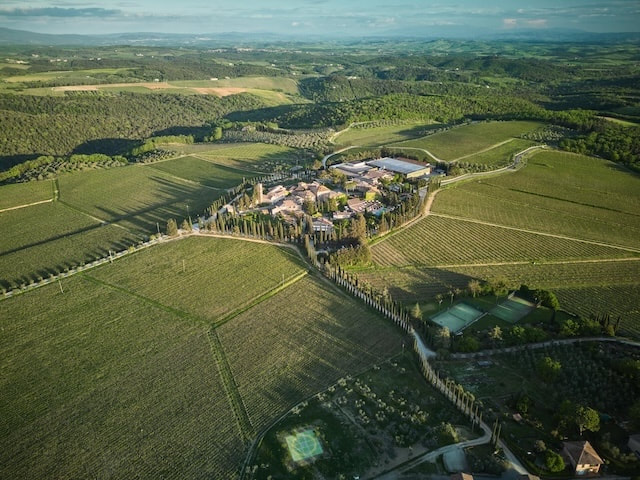

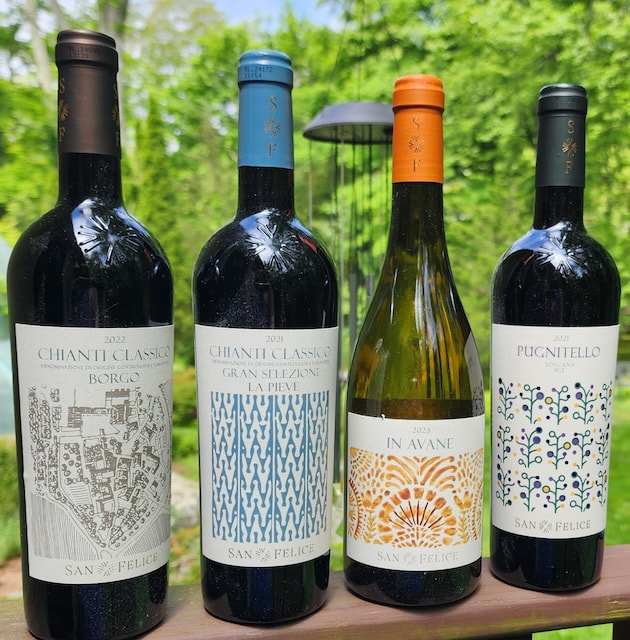
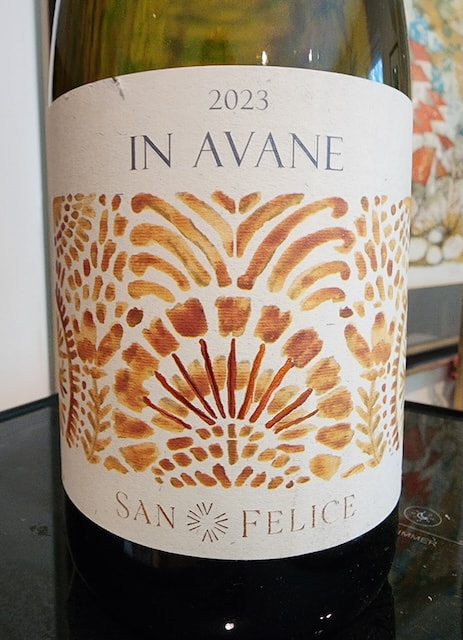
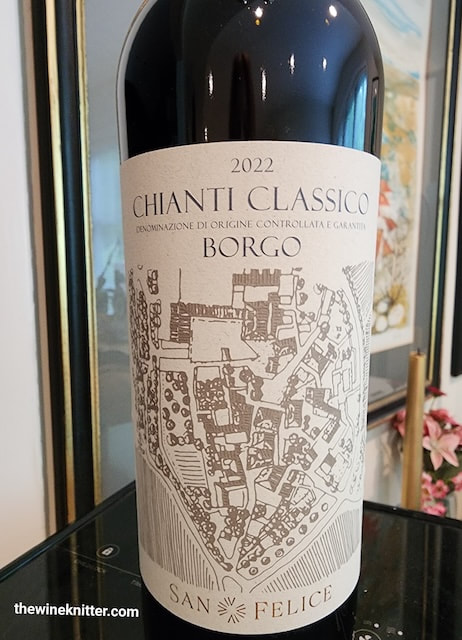
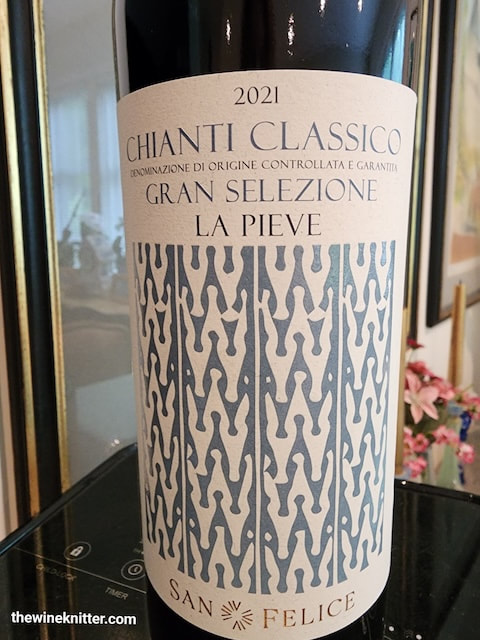
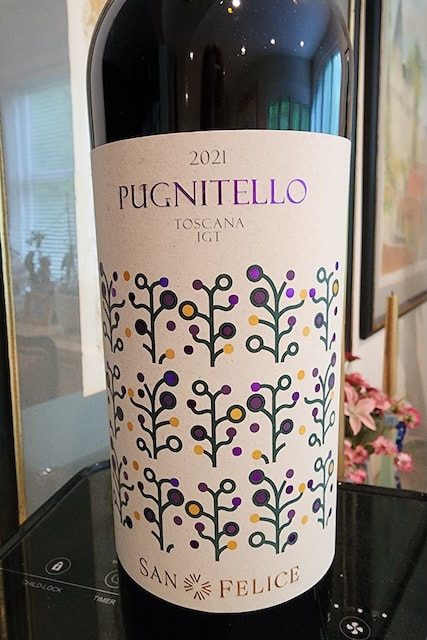
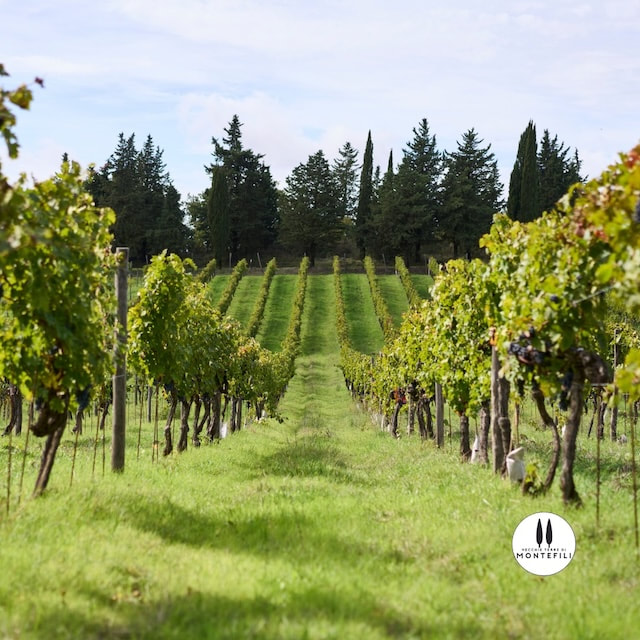
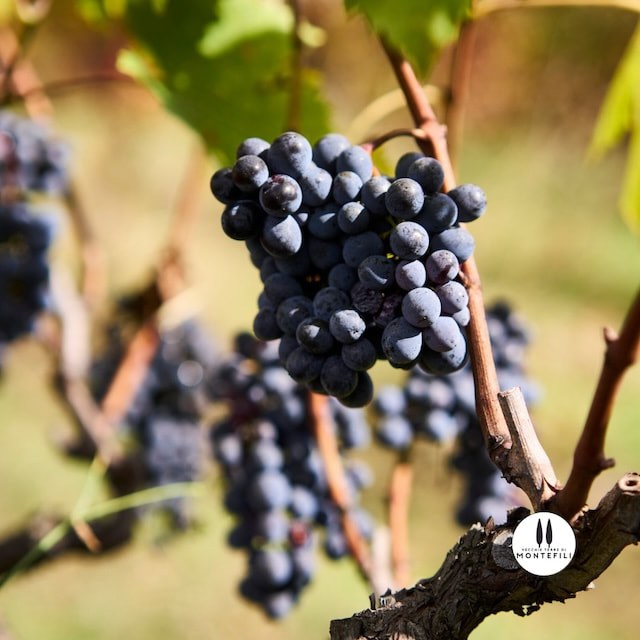
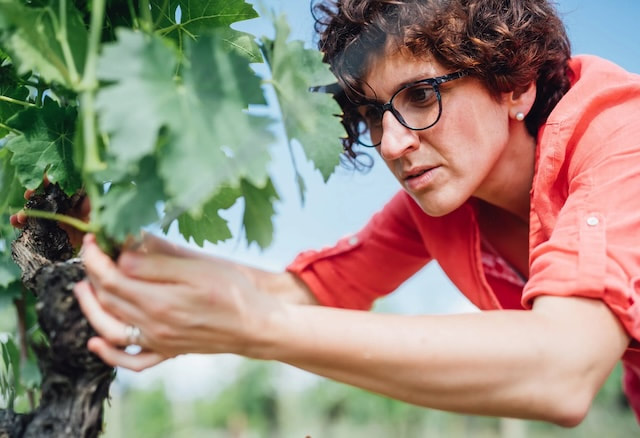
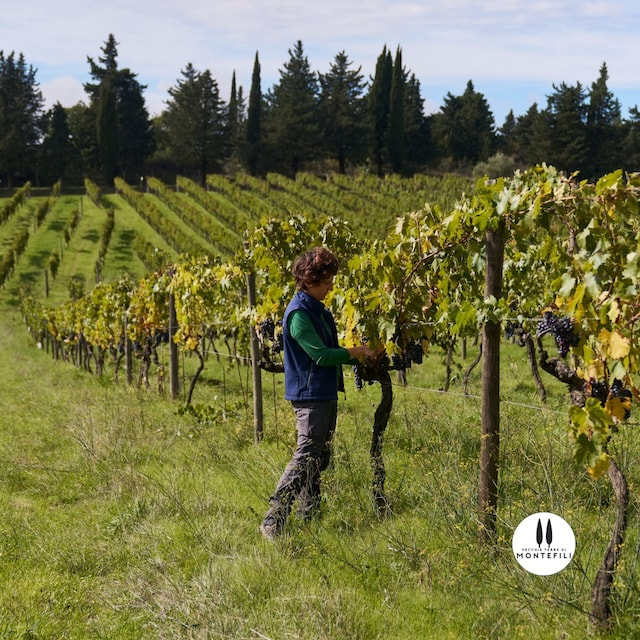
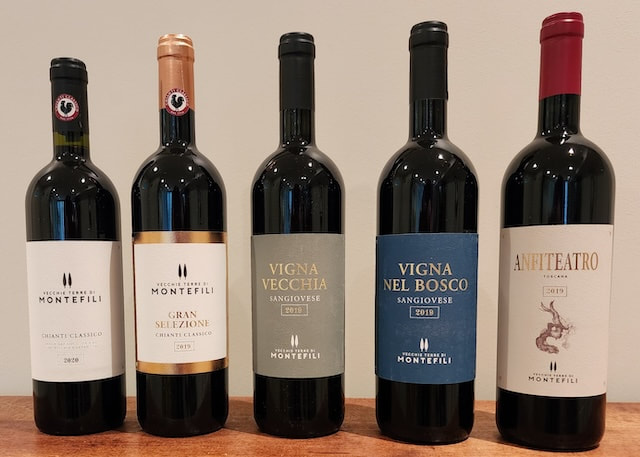
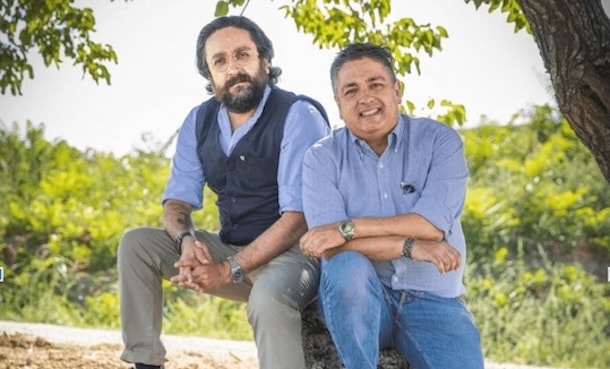
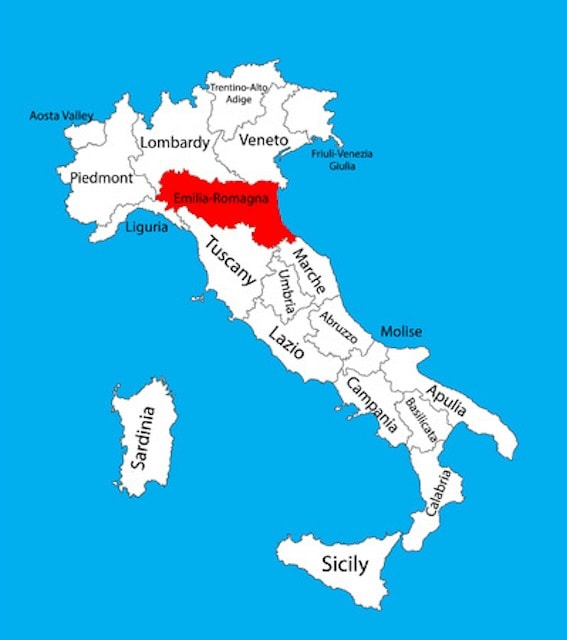
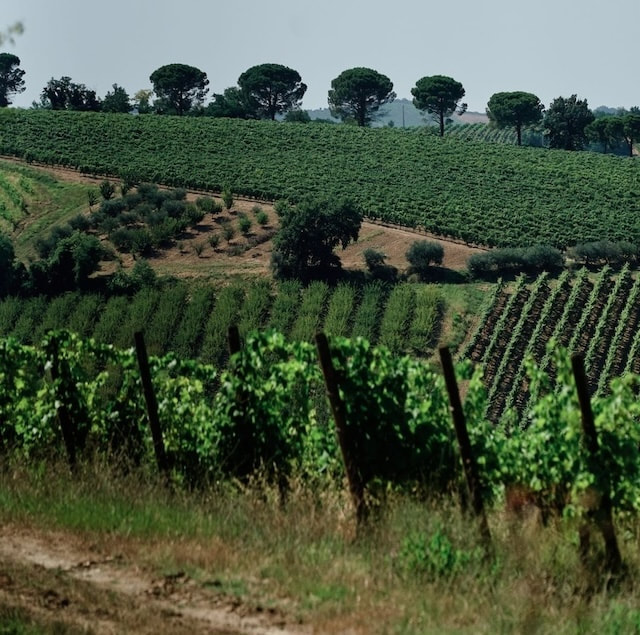
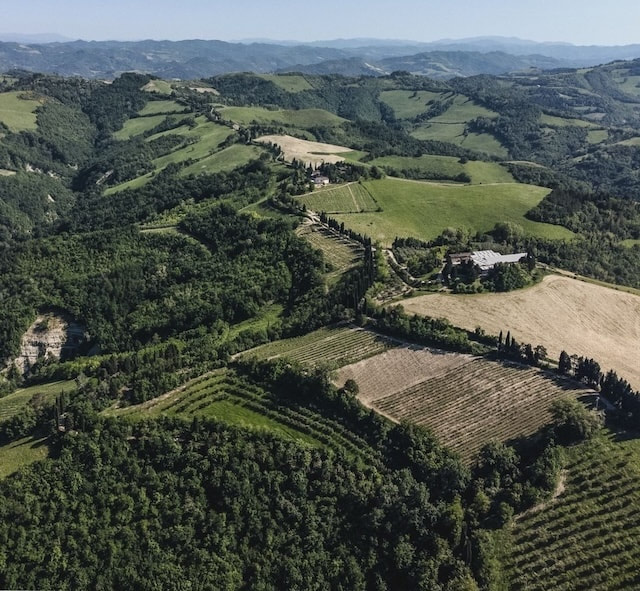
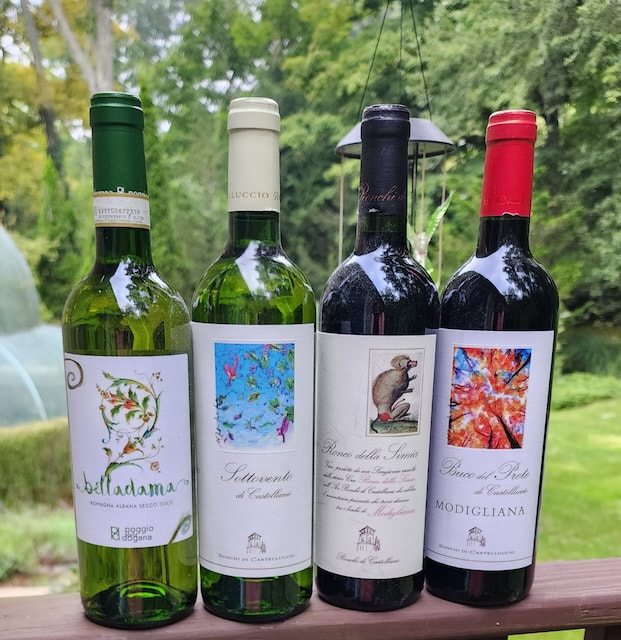
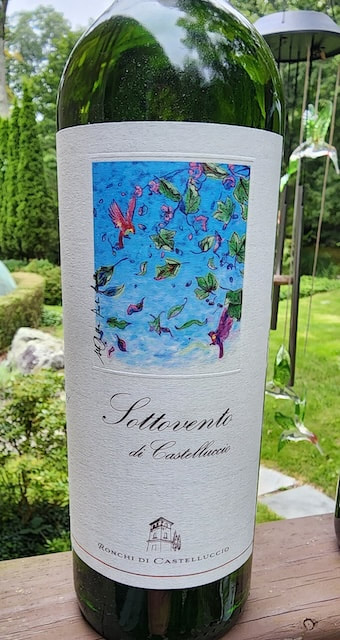
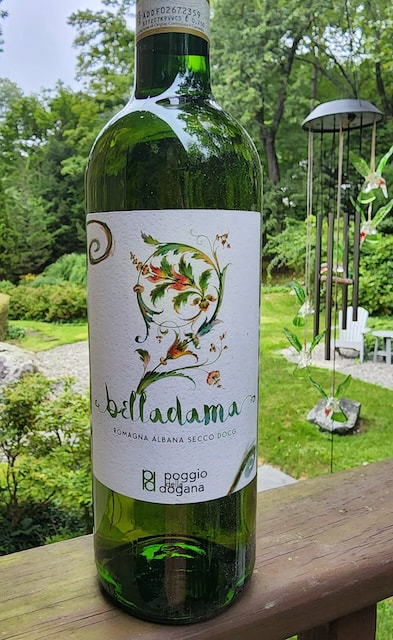
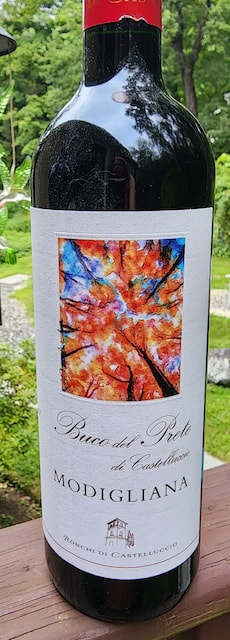
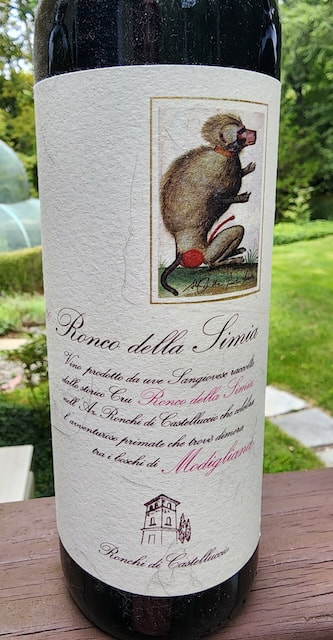
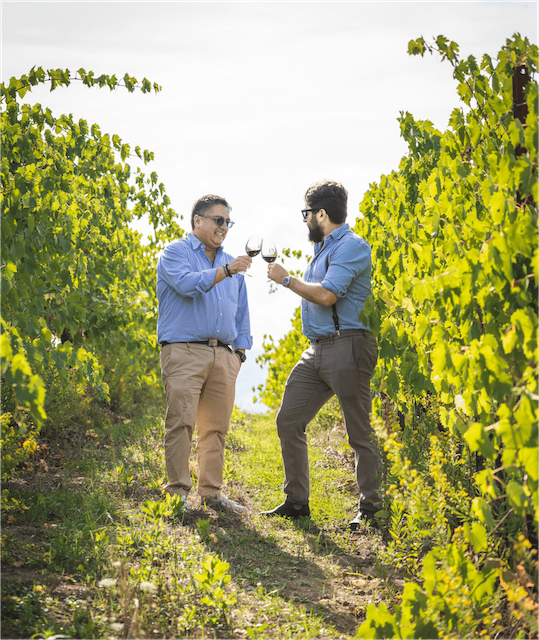
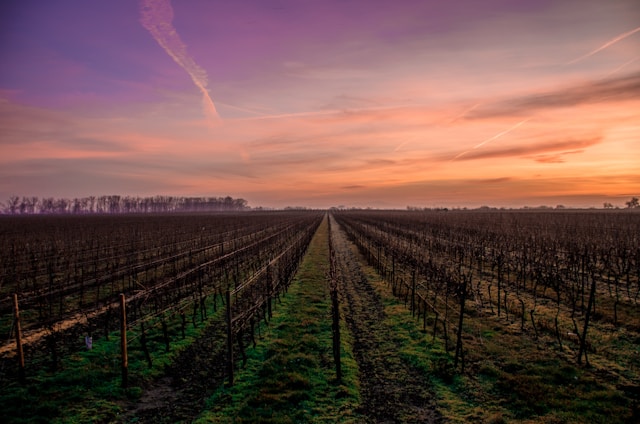
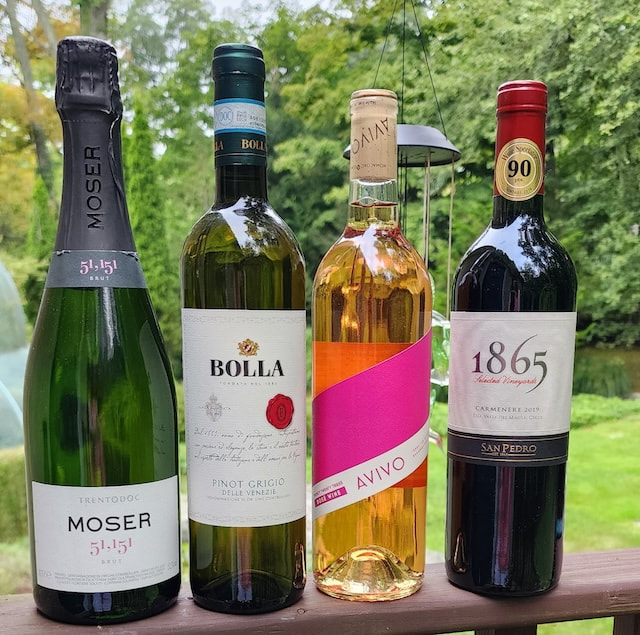
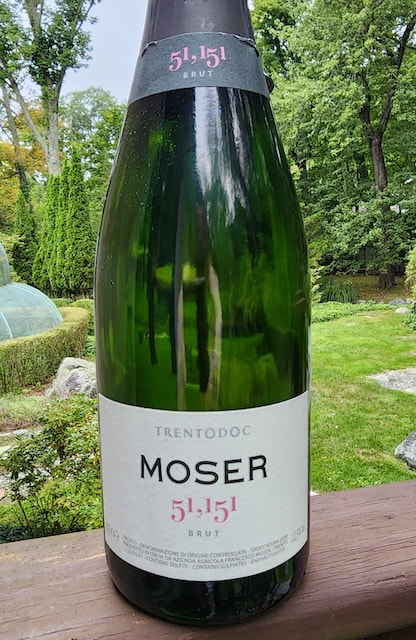
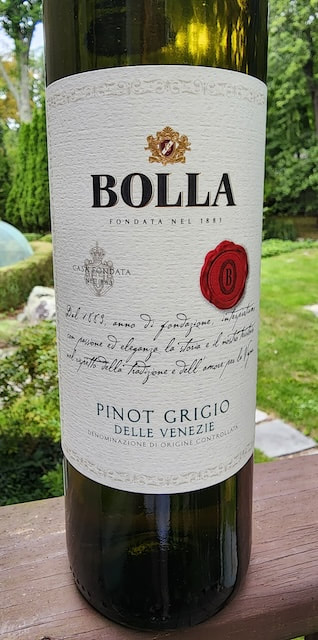
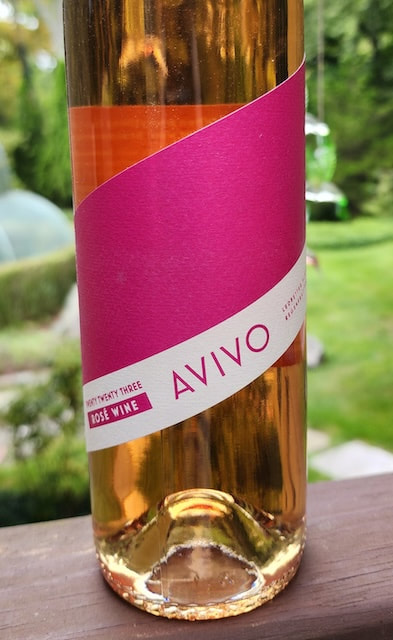
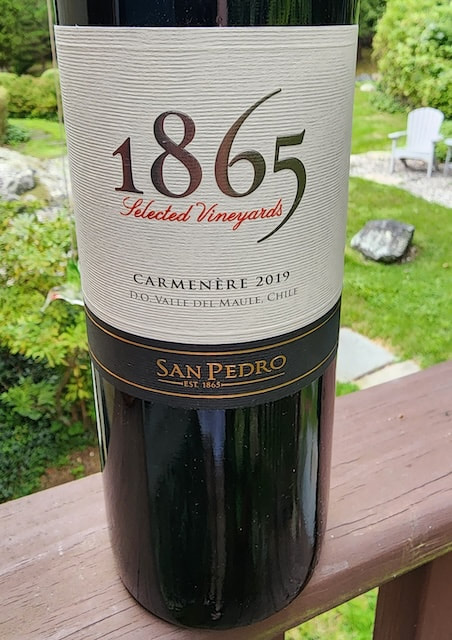
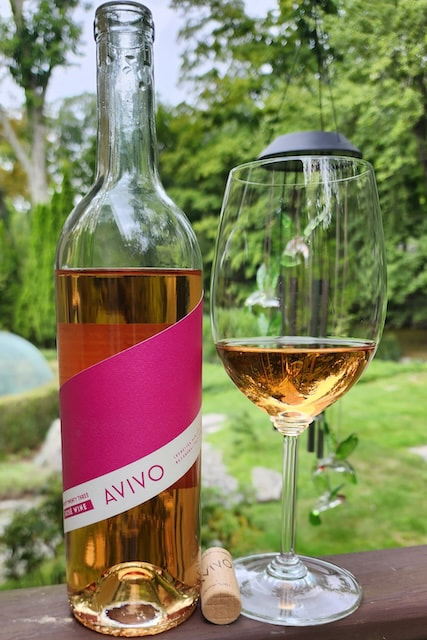
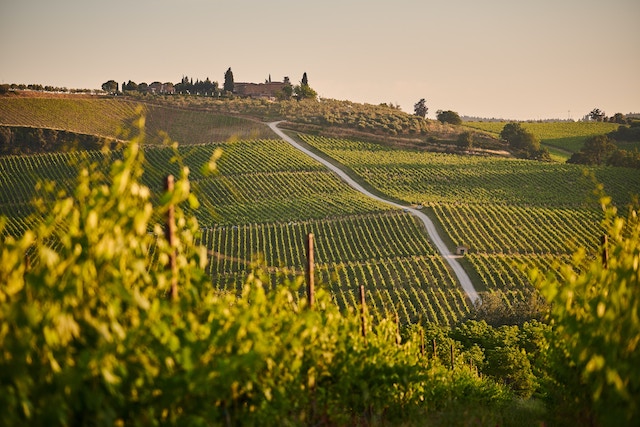
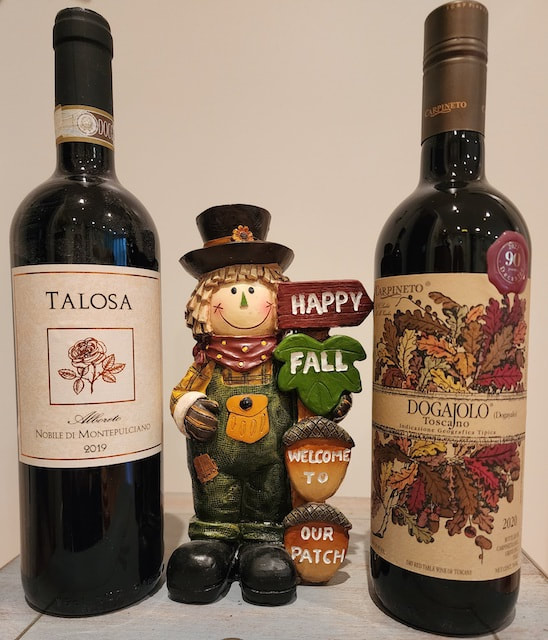
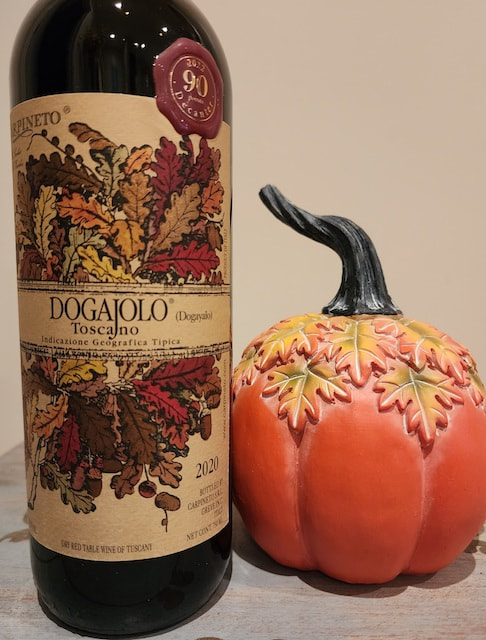
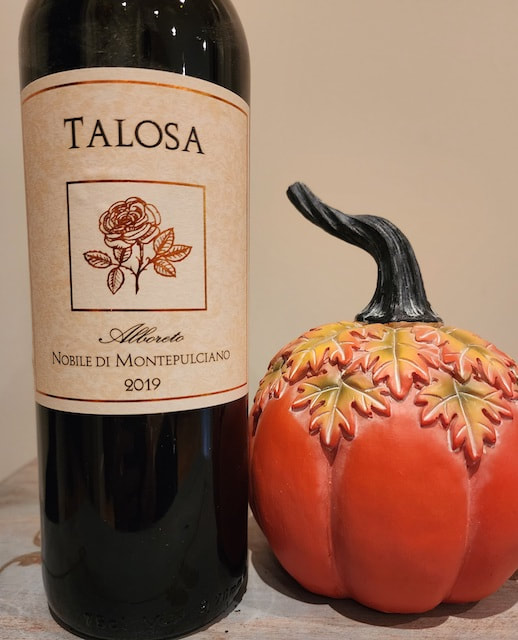
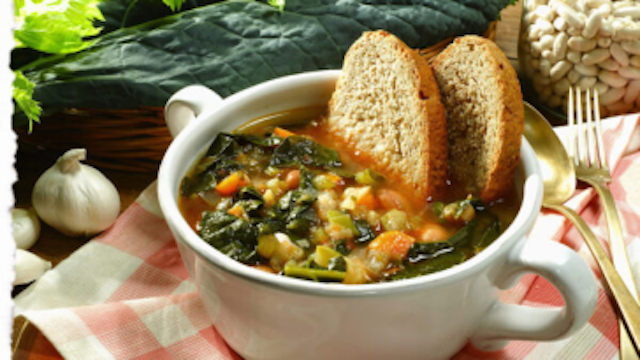
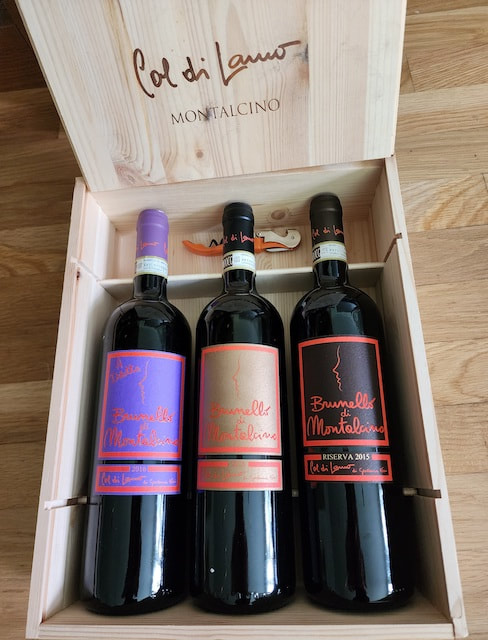
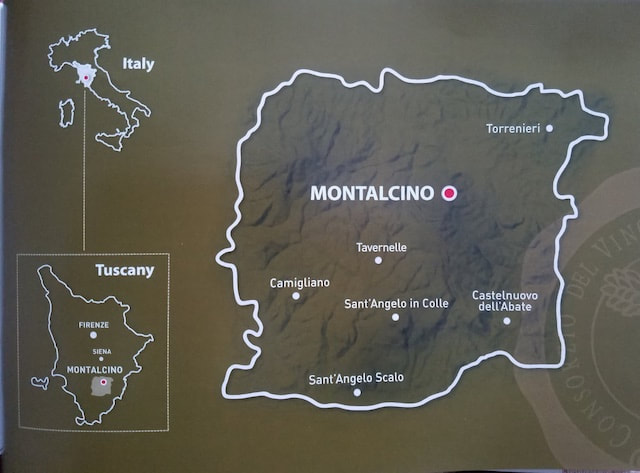
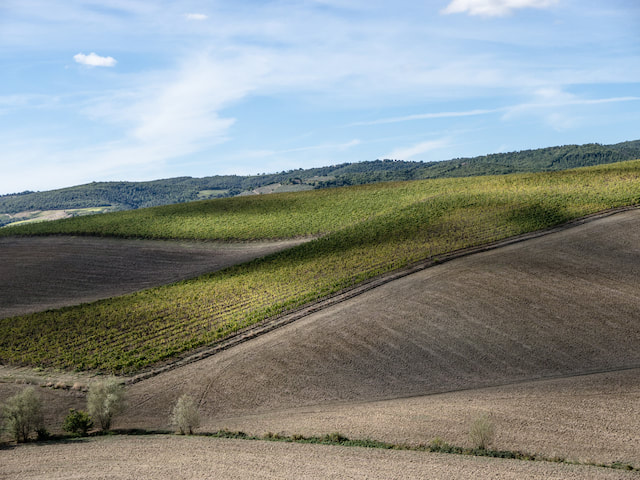
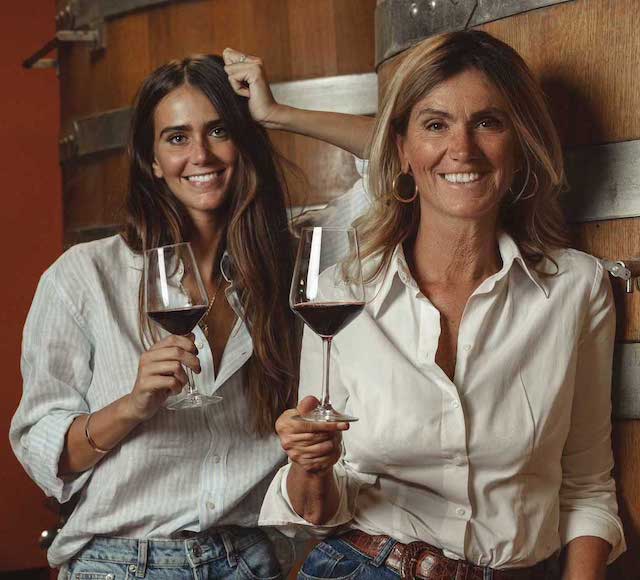
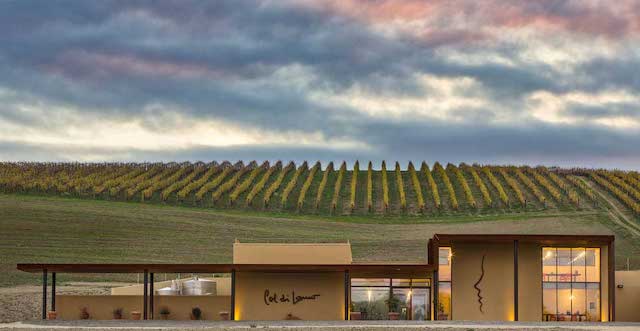
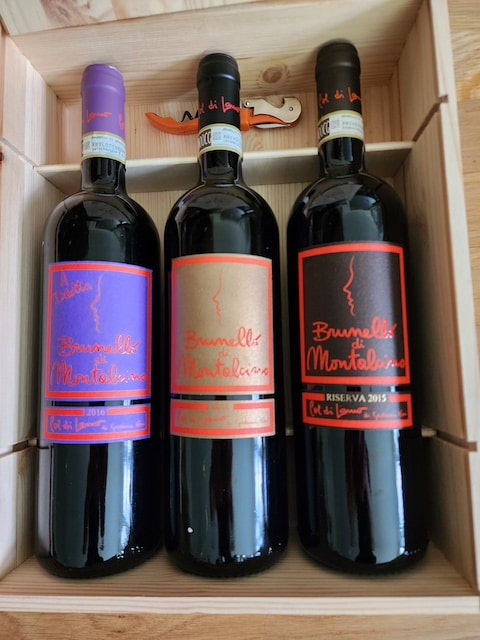
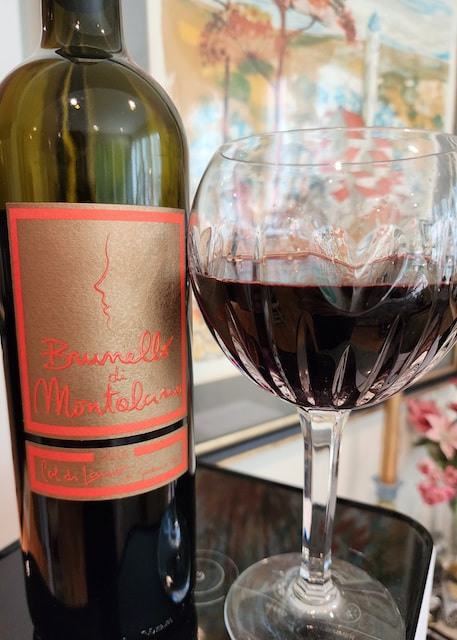
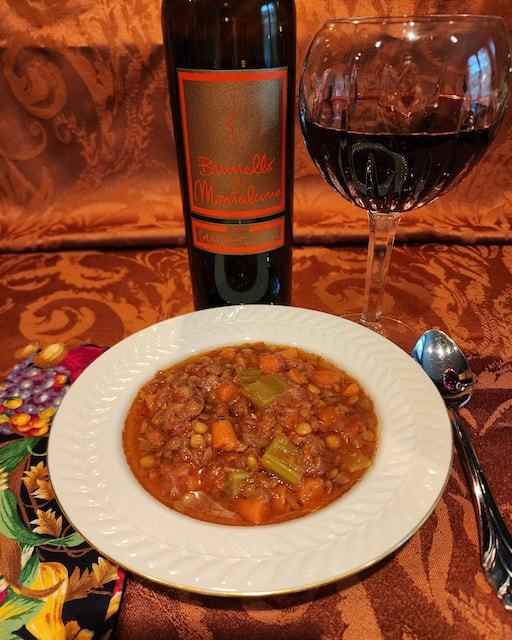
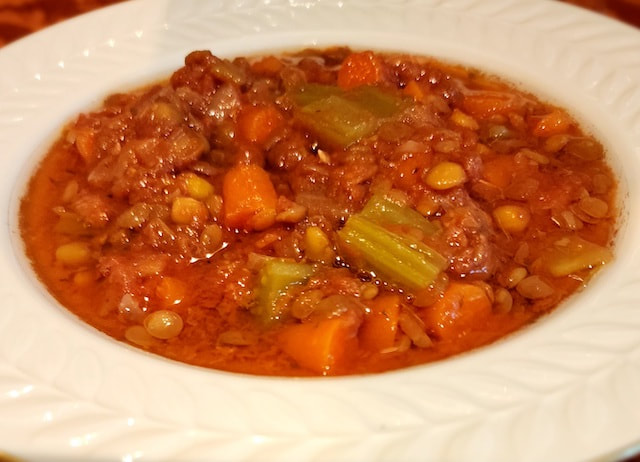
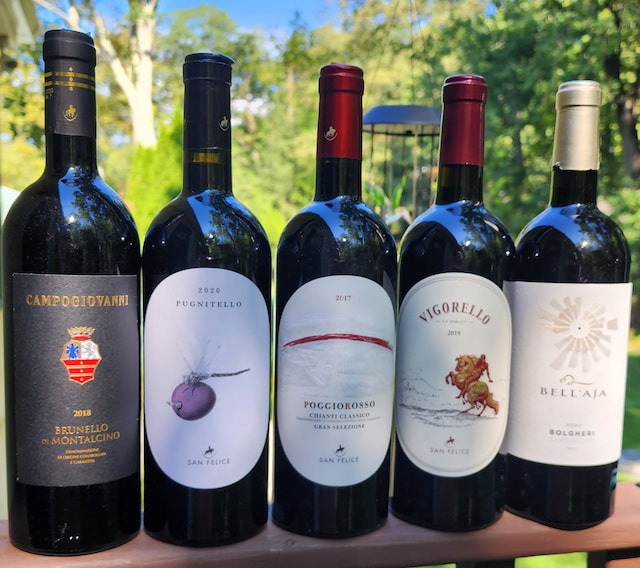

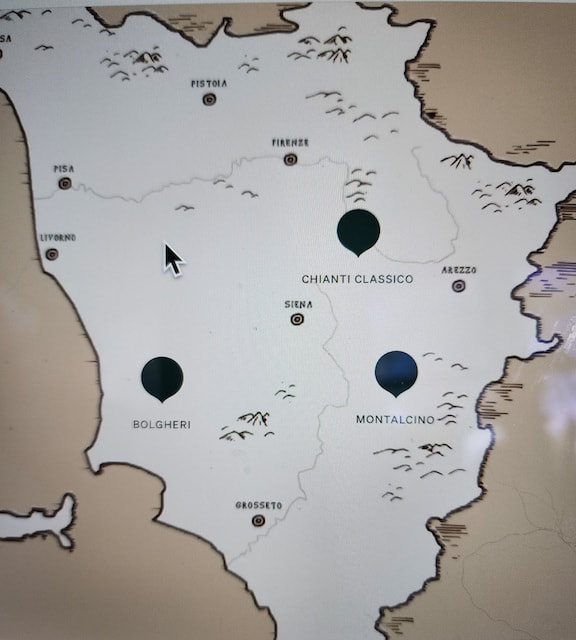
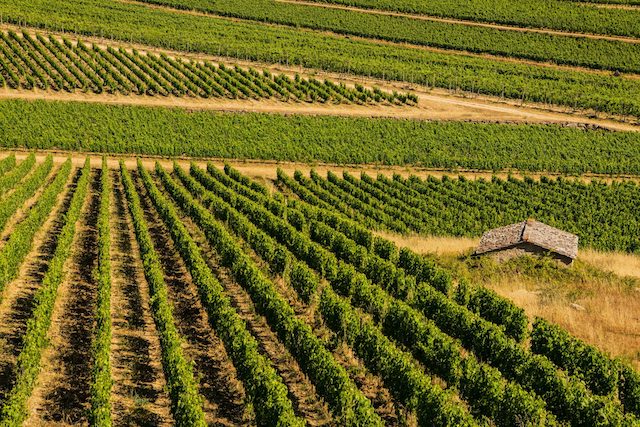
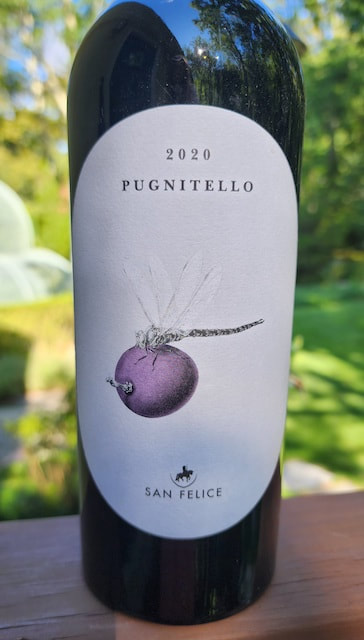
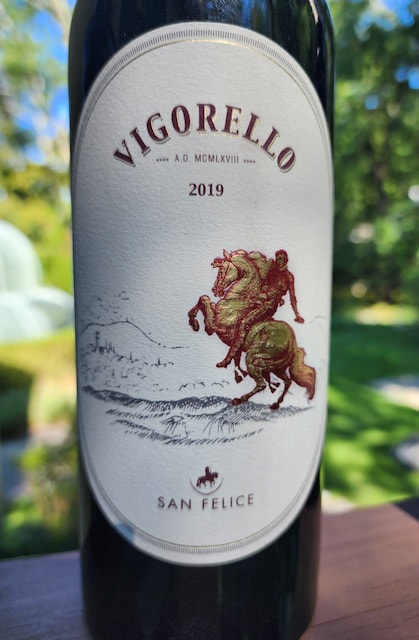
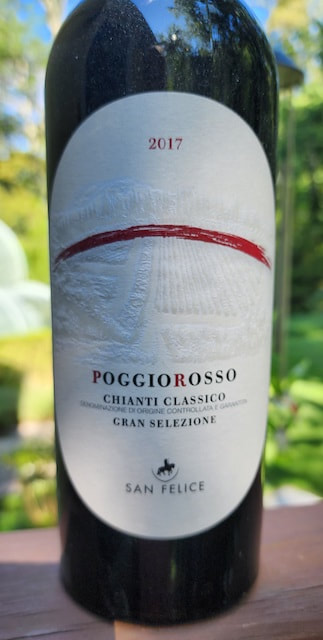
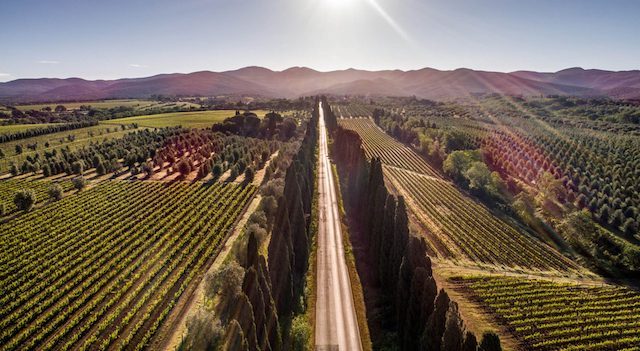
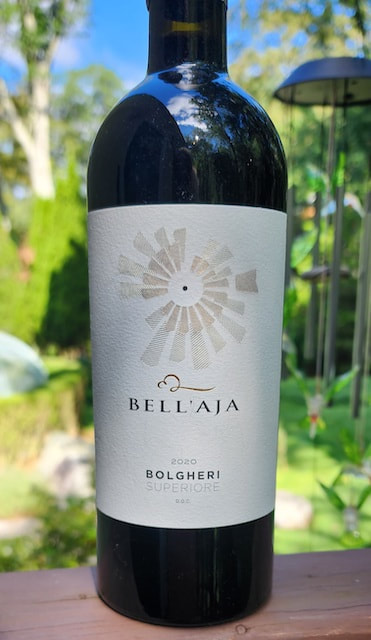
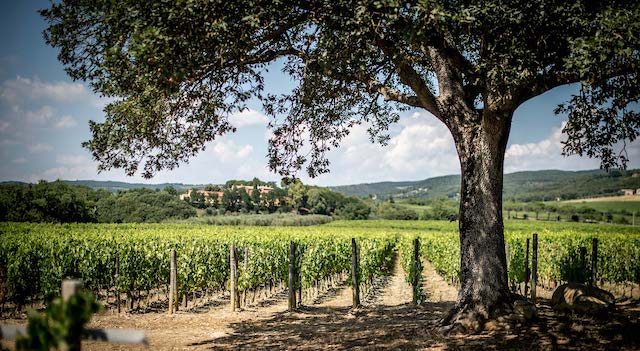
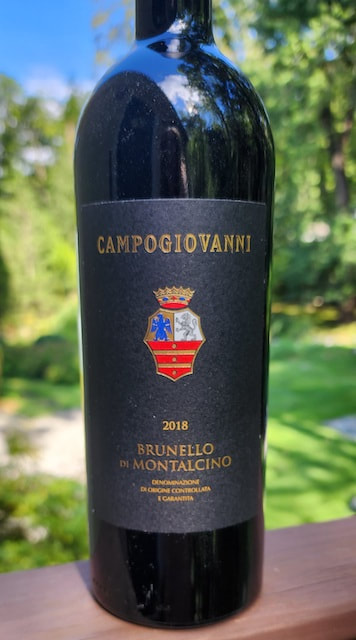
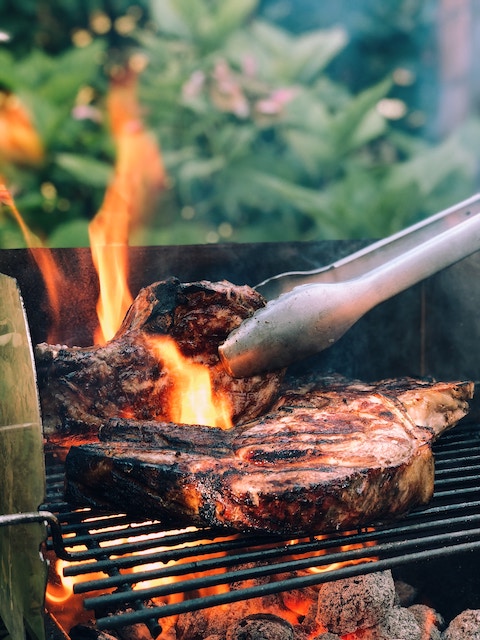
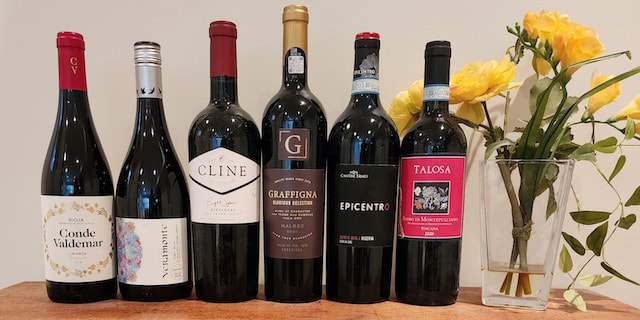
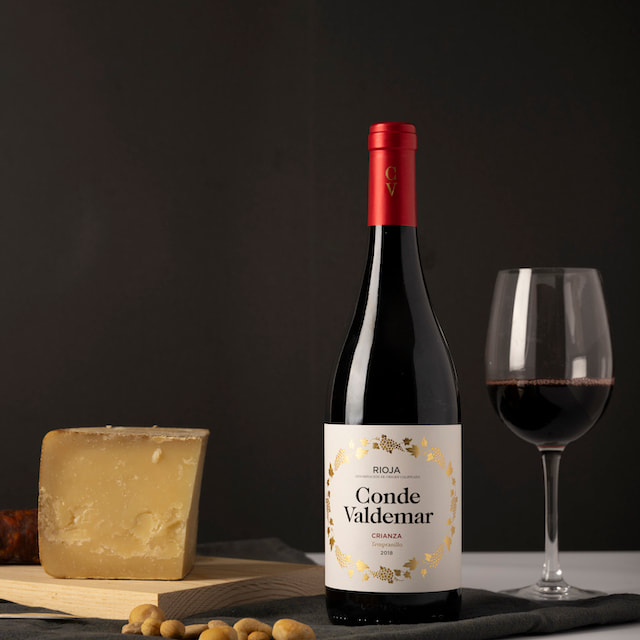
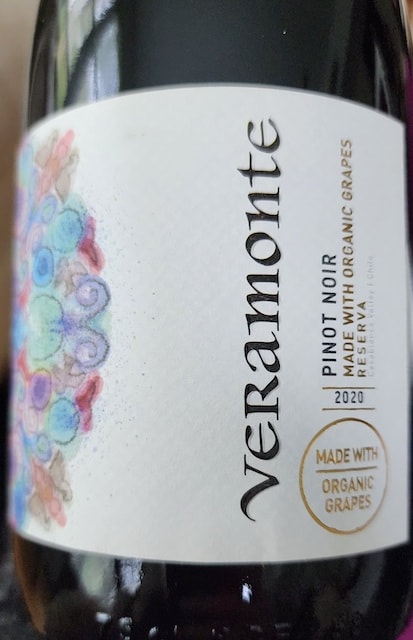
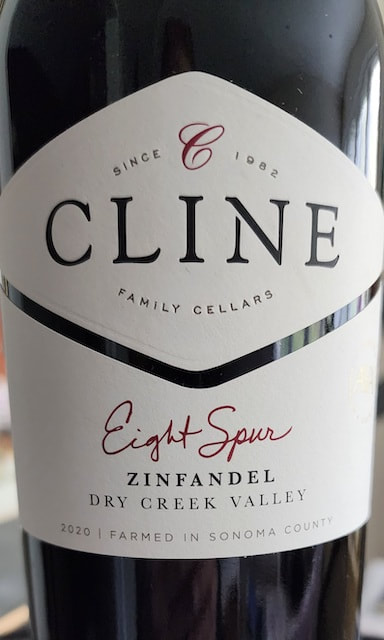
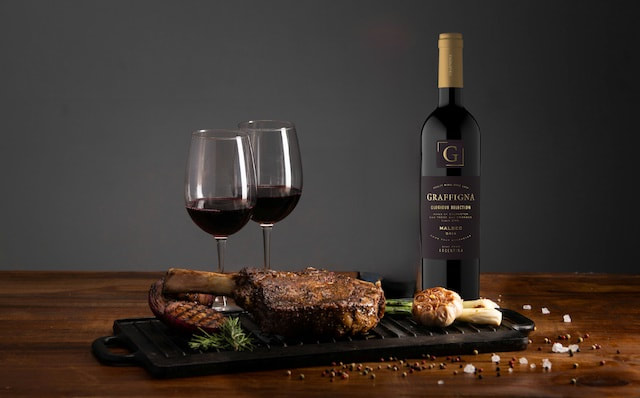
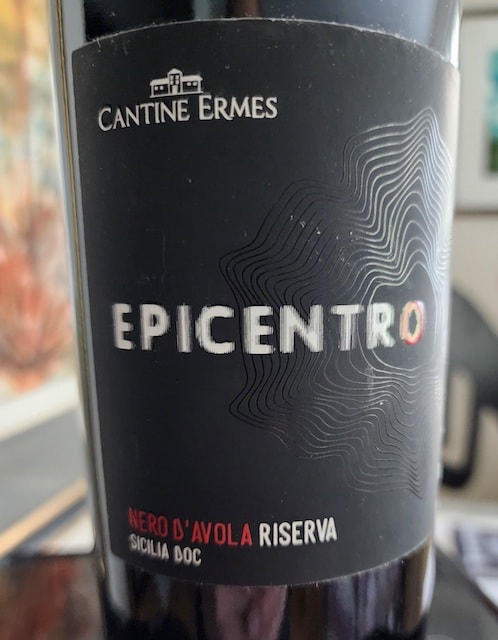
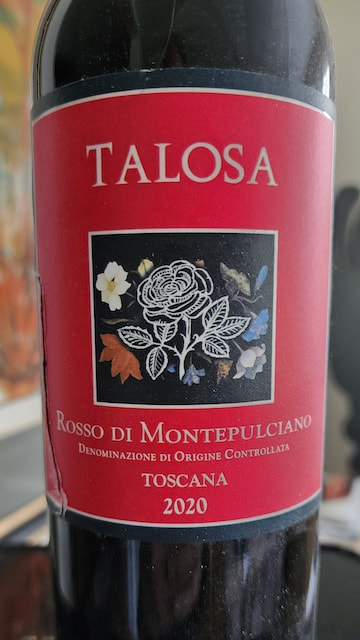
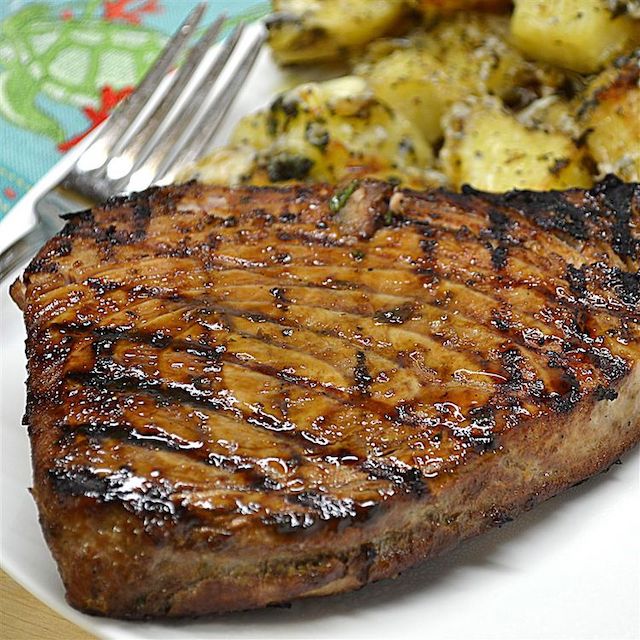
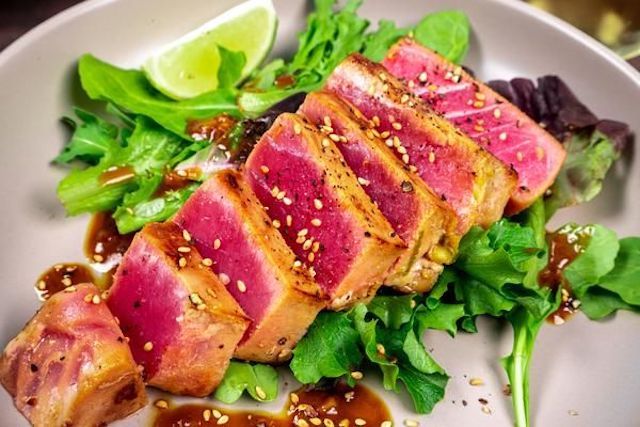
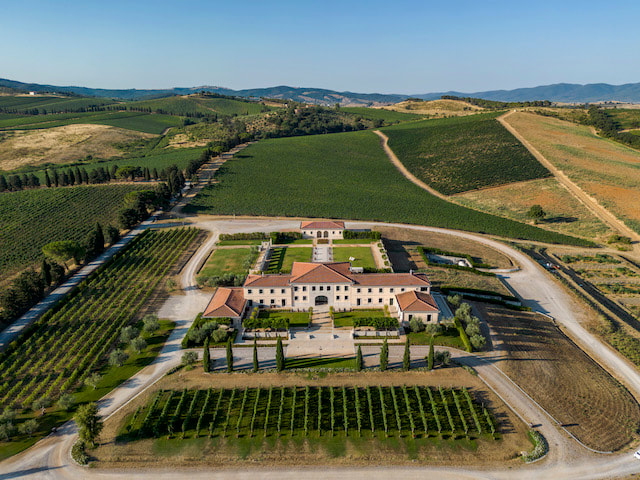

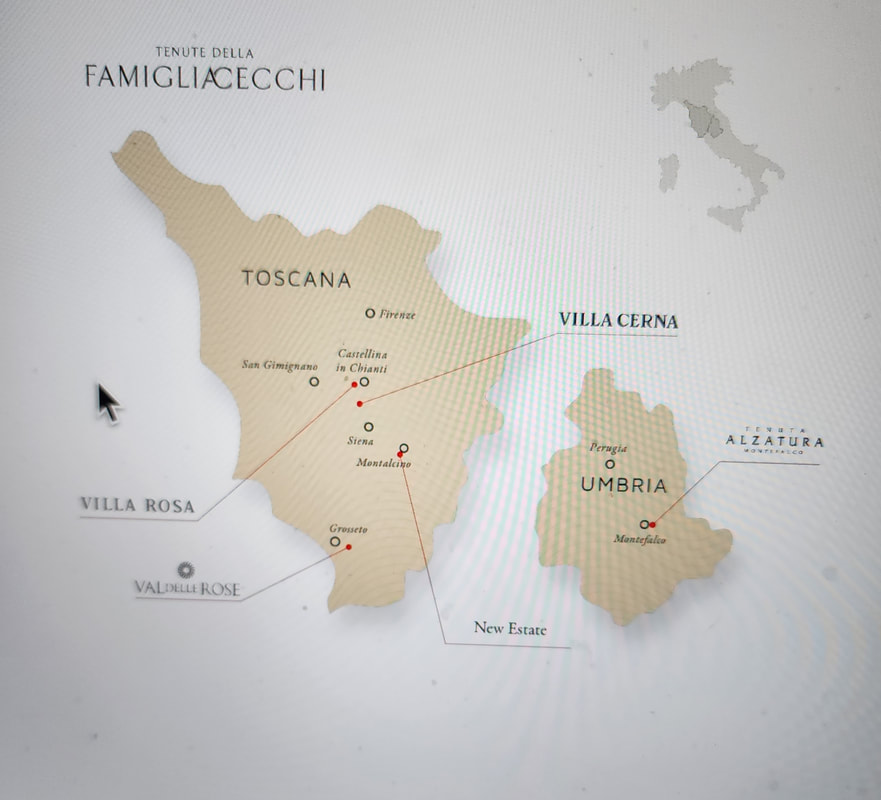
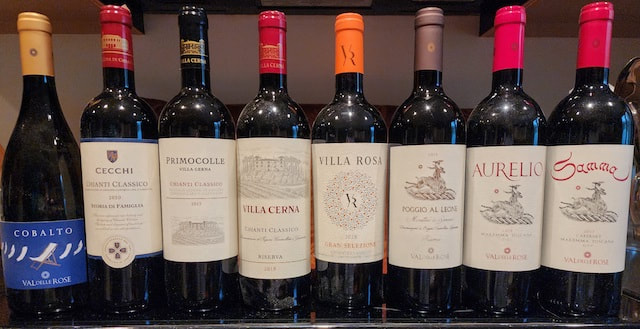
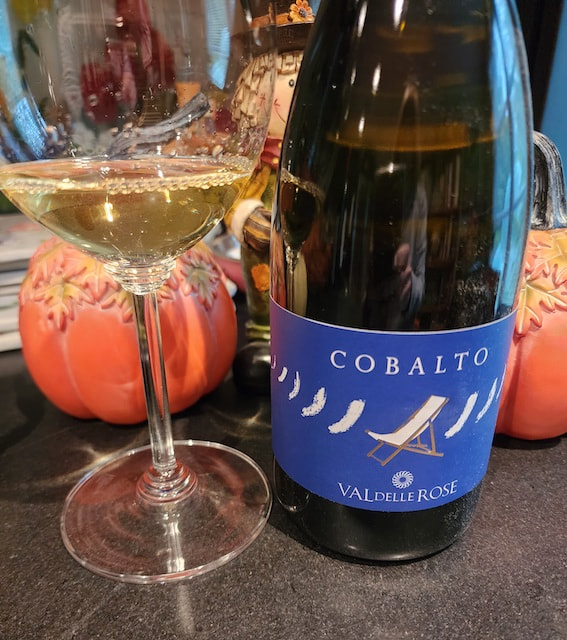
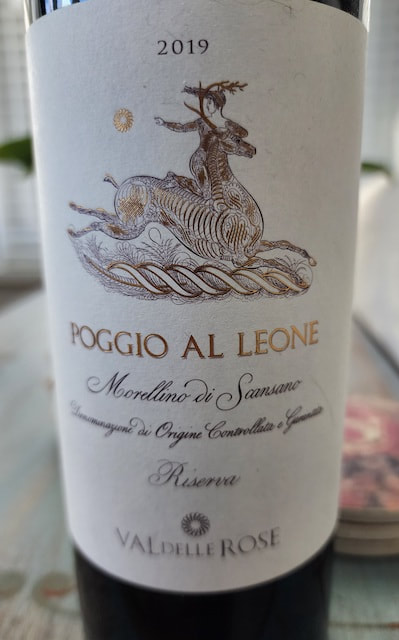
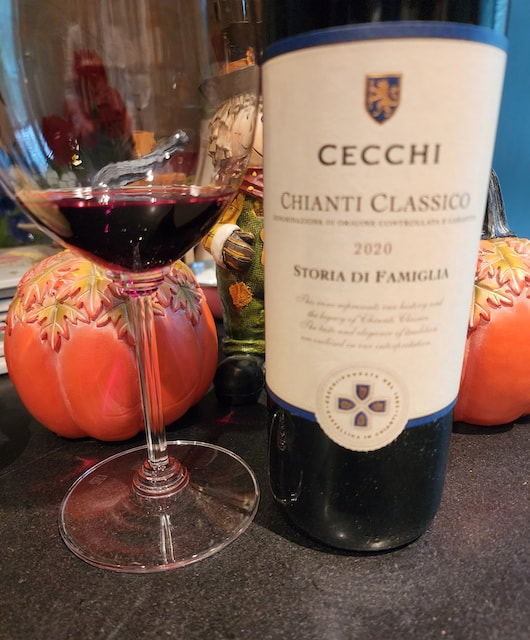
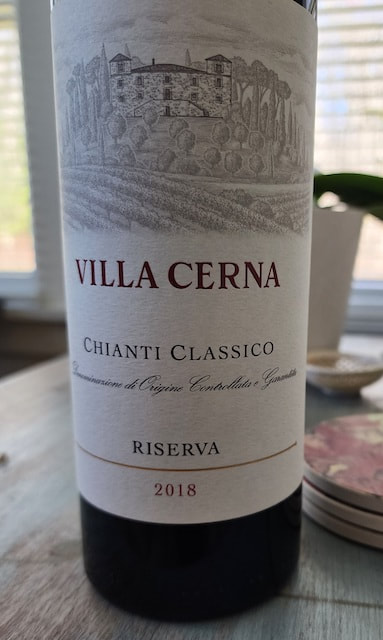
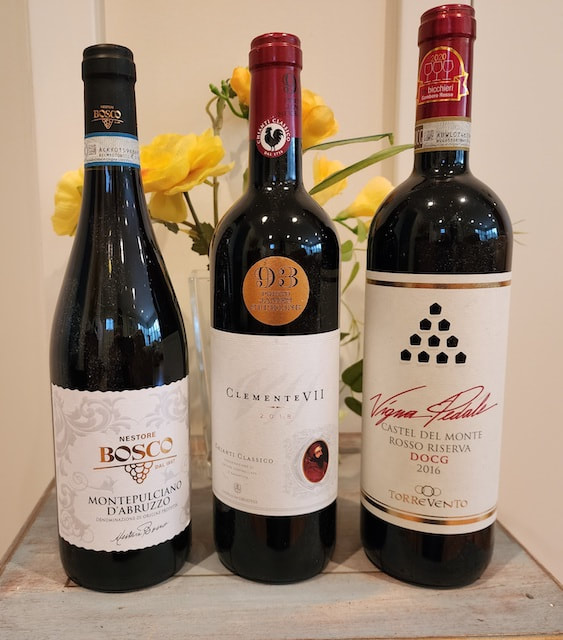
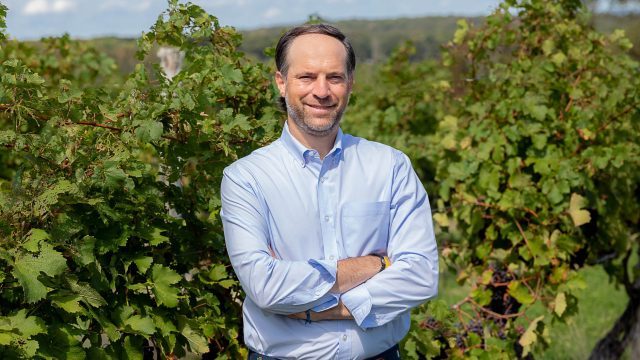
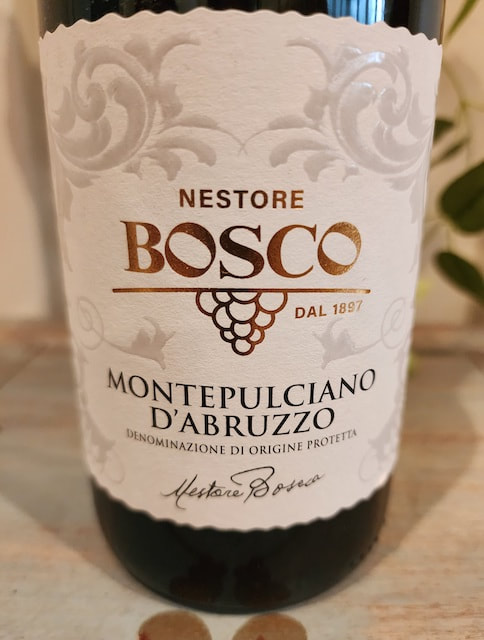
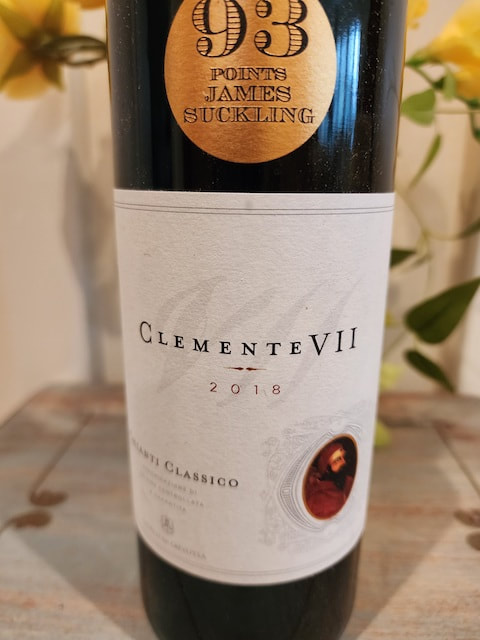
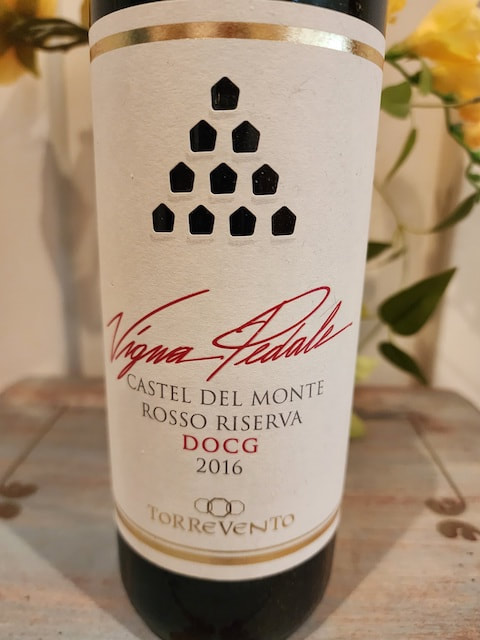
 RSS Feed
RSS Feed